#for archaeology-purposes only
Note
hi can you please threaten yourself for me im kinda busy today
Sure, I got you!
xjnegen: Sam >:(
the-uk-is-jk: Wat :(
xjnegen: Haat jou.
the-uk-is-jk: Ok.
xjnegen: Ok.
the-uk-is-jk: Ik jou ook.
xjnegen: Goed.
xjnegen: Wacht maar. I will get you. Cause I am still pathetic enough to believe that I will win from you in a fight.
the-uk-is-jk: Lol loser. <- is so much cooler than xjnegen
#ill start again on my trowel throwing practices#sharpened trowel#for archaeology-purposes only#throwing in the air and catching#i can also throw it at a target (living creature or just an object)#but that is not very dangerous to me#so ill stick to juggling#with a very sharp trowel#also it may please you to know that the horseflies took over for you as well#they came down on me with ten at the same time several times#just#so many#of them#all threatening silly old me#horseflies are my new second-worst enemy
4 notes
·
View notes
Text
The Best News of Last Week - November 28, 2023
🐑 - Why did Fiona the sheep become a mountaineer? She was tired of the "baa-d" jokes at sea level!
1. Pope Francis dines with transgender women for Vatican luncheon

Pope Francis hosted a group of transgender women — many of whom are sex workers or migrants from Latin America — to a Vatican luncheon for the Catholic Church's "World Day of the Poor" last week.
The pontiff and the transgender women have formed a close relationship since the pope came to their aid during the COVID-19 pandemic, when they were unable to work. Now, they meet monthly for VIP visits with the pope and receive medicine, money and shampoo any day, according to The Associated Press.
2. New York just installed its first offshore wind turbine

The first wind turbine installation at South Fork Wind, New York State’s first offshore wind farm, is complete.
The 130-megawatt (MW) South Fork Wind will be the US’s first completed utility-scale wind farm in federal waters.
3. Anonymous businessman donates $800k to struggling food bank

But this Thanksgiving, a longtime prayer of food bank leaders was finally answered: an anonymous benefactor donated the full $800,000 they needed to move out of a facility they've long outgrown. That benefactor, however, preferred to stay anonymous.
"Very private company, really don't want attention," said Debbie Christian, executive director of the Auburn Food Bank. "It's a goodhearted person that just wants to see the work here continue, wants to see it expand."
4. Empowering woman saving hopes and mental health of suffering Ukrainian kids

Kenza Hadij-Brahim is at the forefront of promoting Circle of Toys
Hadj-Brahim is helping to launch the Circle of Toys initiative. A project that provides Ukrainian children in need of some normality with preloved toys. This new initiative connects people with old toys they might otherwise throw away, with Ukrainian families in need who want to provide some comfort to their children in this distressing time.
Find Refuge said : “The endeavour is driven by a sincere purpose: spark joy, foster play, and bring a hint of normalcy back to the young lives in Ukraine.”
5. TWO LOST CITIES HIDDEN FOR CENTURIES WERE JUST DISCOVERED IN BOLIVIA
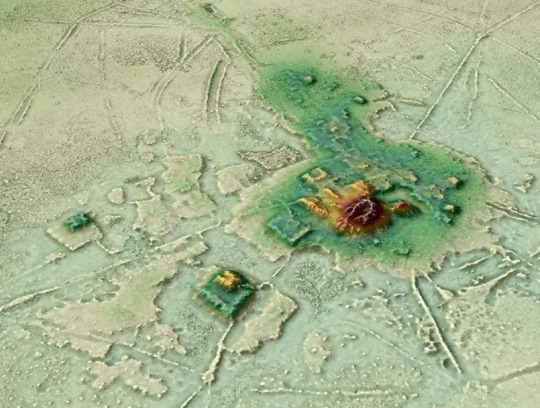
Researchers have found these areas not only housed structures and pyramids but it has been uncovered that there were advanced irrigation systems, earthworks, large towns, causeways, and canals that cover miles.
Dr. Heiko Prümers from the German Archaeological Institute, who was also involved in the study comments that “this indicated a relatively dense settlement in pre-Hispanic times. Our goal was to conduct basic research and trace the settlements and life there. The research sheds light on the sheer magnitude and magnificence of the civic-ceremonial centers found buried in the forest”.
6. Sheep dubbed Fiona rescued from cliff in Scotland where she was stuck for more than 2 years
youtube
And at last, some positive climate news:
7. Three positive climate developments

Heating
When the Paris Agreement was adopted, the global reliance on fossil fuels placed the world on a path towards a 3.5C rise in temperature by 2100. Eight years on, country commitments to reduce their carbon footprints have pulled that down slightly, putting the world on a path for a 2.5C to 2.9C by the end of the century.
Peak emissions
Annual greenhouse gas emissions responsible for climate change have risen roughly nine percent since COP21, according to UN data. But the rate of the increase has slowed significantly. Recent estimates by the Climate Analytics institute find global emissions could peak by 2024
Rising renewables
Three technologies—solar, wind and electric vehicles—are largely behind the improved global warming estimates since 2015.
---
That's it for this week :)
This newsletter will always be free. If you liked this post you can support me with a small kofi donation here:
Buy me a coffee ❤️
Also don’t forget to reblog this post with your friends.
812 notes
·
View notes
Text
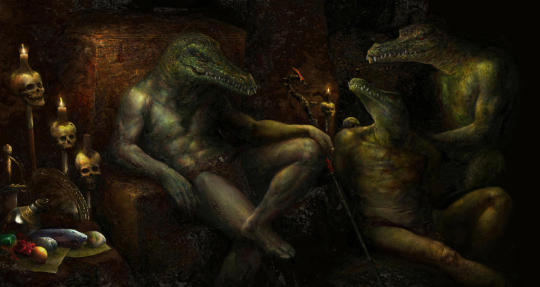
Morrowind: The Court of Menta Na at Kora Dur
—...Kora-Dur may have been a city once, succumbed to the volcanic elements like so many other settlements across northern Vvardenfell. Hard to say if its present excavation is the work of the daedra, but the very purposeful manner of digging implies some foreknowledge of the place. The tunnel—though long and sometimes meandering—shows little sign of either archaeological inquiry or mineral prospecting. When it does open into a side gallery—it is only to circumvent a body of subterranean water, for alas much of Kora-Dur became submerged sometime after the initial excavation, including the original tunnel to its inner sanctum. Failing to keep one's mind off frightful fancies one might imagine these devils—given their crocodilian form— swimming up the underwater passage to flank and ambush an occasional interloper...
#elder scrolls#morrowind#tes#daedroth#daedra#daedricshrine#vvardenfell#morrowind art#digital art#the elder scrolls#digital painting#tesblr#tamriel#molag bal#tes art
91 notes
·
View notes
Text
“Roaming into immortality”: Ten Desires and the history of Taoist immortals

As promised last month, following the freshly established tradition I have another Touhou research post to offer. This time, we’ll be looking into the literary traditions focused on Taoist immortals (or, following the Touhou convention, “hermits”, though this is a less suitable translation) and how they influenced Ten Desires. Due to space constraints and thematic coherence, note that only Seiga, Miko and Yoshika will be covered.
Before you'll begin, I need to stress that one of the sections requires a content warning. While all images are safe for viewing, there's a description of a potentially unpleasant episode involving unwanted advances, and various events leading to that; I highlighted that before the relevant paragraphs too just in case.
“Hermit”, “immortal”, “transcendent”
A post about Ten Desires must start with an introduction of the term sen, the Japanese reading of 仙, Chinese xian. Touhou specifically uses its less common derivative 仙人, sennin, though that's just a synonym. Touhou-related sources basically invariably translate this term as “hermit”. While this option can be found elsewhere too, it is not exactly optimal.
“Immortal” is actually the standard translation for both sen/xian and sennin, as far as I am aware. I did a quick survey of recent publications on Brill’s and De Gruyter’s sites and the results were fairly unambiguous, especially for books and articles published after 2000, with “hermit”, “wizard” and other alternatives being quite uncommon. The trend is not new, with sennin already translated as “immortal” in the 1960s.
When it comes to xian/sen, in a few cases arguments were made that “transcendent” or “ascendent” would be a more suitable option as it better illustrates the position of these beings, though this is a relatively recent trend, for now limited to Sinology. The idea behind it is that immortality is just one of multiple characteristics attributed to the xian, and it is ultimately the transcendence to a higher level of existence that’s the key element. I personally think the argument is sound, but not all translators have embraced it, and for now the choice is really a matter of preference. Since “immortal” is more widespread, and most of the sources in the bibliography use it, that’s what I will employ in the rest of the article, save for direct quotes from Touhou, where "hermit" will be used.
Early history of immortality in Chinese sources
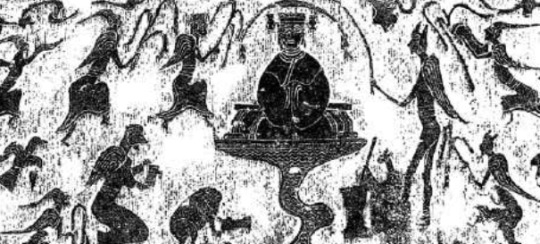
Feathered immortals worshiping Xi Wangmu (from Betwixt and Between: Depictions of Immortals in Eastern Han Dynasty Tomb Reliefs by Leslie Wallace; reproduced here for educational purposes only)
The notion of pursuit of immortality, or at least longevity, is first attested in Chinese sources in the eighth century BCE, when the first bronze inscriptions revealing their authors wished to avoid death altogether appear in the archaeological record. However, the ideas which directly lead to the development of the concept of immortals as discussed here only started to develop in the fourth BCE. Initially they were associated with so-called fangshi, a class of multi-purpose esoteric specialists who often served for example as court diviners.
These ideas developed before the unification of China by Qin Shi Huang, but their importance grew after this event, as many of their proponents were warmly received in the courts of Qin and Han emperors. Some of them, like Wu of Han, even sent expeditions in search of distant lands where immortals purportedly lived, of which Penglai is the most famous.
As a curiosity it’s worth mentioning here that the reception of these pursuits was actually mixed in Chinese historiography. Some of the rationalist Eastern Han authors such as Wang Chong evaluated it critically, basically describing it as a waste of time and resources leading to poor governance.
We know relatively little about the development of beliefs focused on immortality outside of the imperial court in the Han period, though it is evident that they gained considerable prominence, and it’s even possible to speak of “immortality cults” among the general populace. That’s for example seemingly how the worship of Xi Wangmu, arguably one of the most famous Chinese deities, became widespread. Tomb paintings showing blissful immortals also appear in this period.
In art immortals were initially depicted as winged, feathered beings. The origin of this tradition remains unclear, though it has been noted that various similar bird-like beings are also listed in the Classic of Mountains and Seas, attesting to this being a widespread motif in early Chinese tradition. You might be familiar with portraying immortals as wizened sages instead. This convention only developed when the image of the immortal merged with that of the ascetic hermit in the Eastern Jin period - more on that later.
Immortals in Ge Hong’s Baopuzi

A 20th century illustration of Ge Hong (wikimedia commons)
The first formalized instructions for the pursuit of immortality were compiled during the reign of the Eastern Han. Some of them were rooted in the early Taoist tradition, which at the time was also being partially formalized under the Way of the Celestial Masters. Seemingly many Taoist works dealing with these matters were compiled, but most of them are only known from references in Ge Hong’s Baopuzi, one of the most important texts for the study of the history of ideas about immortality.
Ge Hong states that immortality can be obtained through personal virtue and specific practices, including exercise, following strict dietary restrictions and, most importantly, through engaging in alchemy, which he hails as the most effective. All the means to obtaining immortality were unified by one principle: cultivating qi, both by maintaining one’s own and by absorbing it from the right kinds of plants and minerals. Grains were held to be inappropriate food for those pursuing immortality, as it was believed they nourished the so-called “three worms”. The final goal was to be able to use morning dew or light for sustenance. The easiest way to move towards that goal was believed to be consumption of alchemical elixirs, said to possess a more potent, refined form of qi of all their carefully selected ingredients.
Needless to say, many of such magical concoctions were highly poisonous thanks to the inclusion of mercury, cinnabar and other similarly exciting substances. Ten Desires describes the consequences pretty accurately: Miko “turned to the use of various unusual materials, such as cinnabar” which “ruined her body”; as a result she “destroyed her health because of the very Taoism that was meant to grant her immortality”. Such a fate is not historically unparalleled, and there is even a strong case to be made that the notoriously erratic behavior of some of the particularly immortality-obsessed emperors was the result of alchemically induced heavy metal poisoning.
Cinnabar cocktails aside, a further important piece of information from Baopuzi is the reference to three classes of immortals, celestial (天仙), earthbound (地仙) and corpse-liberated (尸解仙). What separated these three groups was the degree to which they perfected their state before formally attaining the rank of immortal. The most refined were basically invited into heaven, with the best of the best taken there on the back of a dragon. Those who despite their efforts lacked something had to put in some additional effort themselves instead.
While the "celestial" and "earthbound" immortals are largely self-explanatory (we'll go back to them later, though), the label of “corpse-liberated” warrants a more detailed explanation. It refers to those who settled for faking own death. This act is called shijie (尸解), and involves substituting the body for an object, which is to be buried as if it was a person. Of course, immortality obtained this way was effectively second rate, though it was not impossible to become a proper celestial immortal later on. As you can probably notice, this is precisely the path to immortality ZUN has chosen for characters in Ten Desires. The term shikaisen used multiple times in the game is in fact simply the Japanese reading of 尸解仙.
Immortals in secular literature

Four Immortals Saluting Longevity by Shang Xi (wikimedia commons)
The importance of the search for immortality grew during the Six Dynasties period. Seemingly in all strata of society a common reaction to frequent political turmoil was to seek solutions in Taoism and still relatively new Buddhism. This in turn left a huge impact on Chinese culture of this era as a whole.
What is of particular relevance for this article is less the straightforward religious dimension of immortality, and more its reflection in literature. Works about immortals were already being written in the Western Han period, with the oldest surviving example being Liexian Zhuan (列仙傳) attributed to Liu Xiang, who lived in the first century BCE. Their importance only grew with time due to the aforementioned process, and they became a well established part of both poetry and prose. For example, a sixth century treatise on literary genres, Xiao Tong’s Selections of Refined Literature (文選; Wenxuan), pretty much the main source to fall back on in the study of pre-Tang literature, recognizes youxian (遊仙), literally “roaming into immortality”, as a distinct type of lyrical poetry. There’s a considerably degree of nuance to this term, since 遊 has the implications of leisurely, playful activity, but these lexical considerations are beyond the scope of this article.
While in some cases the tales of immortals focused on figures primarily known for other reasons, like the Yellow Emperor, Chang'e or Laozi, many document the lives of historical pursuers of immortality instead. Well attested fangshi and Taoist masters appear in such a context, for instance Anqi Sheng or Liu An (according to a legend he ascended to heaven with his entire household, including dogs and other animals).
The literary biographies, or rather hagiographies, of immortals often highlighted their personal eccentricities, tied to their detachment from society. The archetypal eccentric immortals are obviously the members of the group popularly known as the Eight Immortals, though this is a much later development, and the genre conventions formed centuries earlier.
Literature about immortals is interesting from a modern perspective because at least in part it was arguably a secular pursuit. As secular as something could be prior to the rise of the modern notion of secularism, that is (see Mark Teeuwen’s article on Edo period secularism for some arguments against seeing secularism as an entirely modern phenomenon). This is not merely the modern perception, for clarity - the earliest statements to that effect can be found in works of literary criticism from the second century or so. The writers were chiefly scholars, courtiers and officials, not clergy, and naturally their works are not recognized as “canonical” Taoist literature.
Some of these authors took the topic of immortals into rather peculiar directions. According to Xiaofei Kang, during the Six Dynasties period amorous encounters with female immortals (仙女, xiannü) were a “fashionable topic among literati”, while in the subsequent Tang period some authors compared courtesans they sometimes were actually involved with to immortals metaphorically. She notes that they effectively created a genre of works focused on immortals which was no longer really describing the pursuit of immortality, but rather “encounters with enchanting beauties, both real and imagined”.
Needless to say, the literature about immortals remained relevant in later periods, and new stories continued to be written under the reign of subsequent dynasties. Many can be found in Pu Songling’s famous Liaozhai (Strange Tales from a Chinese Studio). This collection was written in the Qing period and remains in wide circulation today as a literary classic.
Pu Songling’s tale of Qing’e: the origin of Seiga
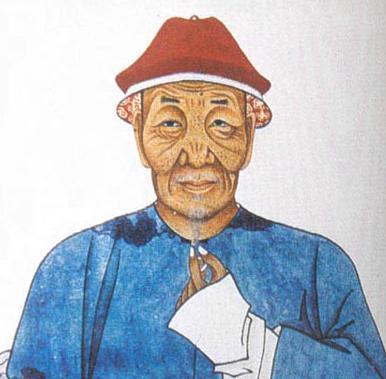
Pu Songling (wikimedia commons)
It is beyond the scope of this article to discuss all of Pu Songling’s tales about immortals, but there is one which necessitates further discussion, namely Qing’e, which is very obviously the basis for Seiga’s character. This makes her somewhat unusual among Touhou characters - while the story she is based on deals with religious themes, and fiction can shape religious views at times (as evidenced by the popularity of Sun Wukong or the image of hell in Divine Comedy), I found no indication Qing’e was ever views as anything but a literary character.
Like the rest of Liaozhai, the Qing’e tale has been translated into English in the 2000s. Songling’s works have an older and more famous translation too, but it’s just a selection, and it has many issues, which you can read about here. You can read parts of the more modern translation on Google Books. Obviously it can also be found easily in other places. I will also summarize the story of Qing’e below for convenience.
This is where the content warning I mentioned applies: the story is not very explicit, but there are is a scene of what I think counts as attempted sexual assault and other generally unsavory moments of that sort, so if that bothers you, skip ahead to the next section.
The beginning of the story introduces a certain Huo Huan (霍桓) from Shanxi, a sheltered young man of unspecified age (he’s older than 13 but “ignorant of adult desire”, which is pretty vague). He lives in the same neighborhood as the eponymous Qing’e (青娥), a teenage daughter of a certain mr. Wu (武), who was apparently a devout Taoist. Qing’e secretly read through her father’s personal collection, developing an admiration for He Xiangu in the process. When mr. Wu left for the mountains to become an immortal, his daughter declared she will never marry. Her decision is presumably meant to mirror one of the versions of the tale of He Xiangnu, who reportedly attained immortality by remaining celibate and consuming mineral powders (granted, you can also find versions where her immortal career started when she was seduced by Lü Dongbin, but that does not match the story here).
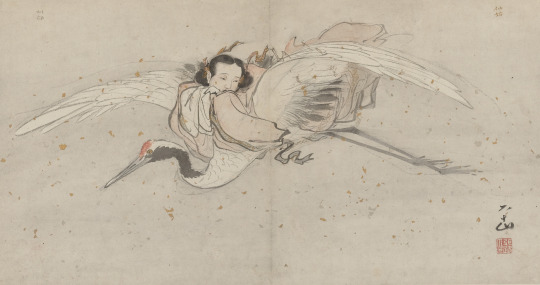
He Xiangnu by Zhang Lu (wikimedia commons)
Huan sees Qing’e outside at some point and, without really talking to her, decides she has to marry her and asks his mother to send someone to arrange that. she doesn’t think it’s a good idea, but eventually caves in. Lo and behold, it doesn’t work and the Wu family is not interested in the proposal. Huan then meets an unrelated Taoist, who offers him a magical tiny spade (one chi long) used to dig up Taoist-preferred herbs (a key component of the immortality keto diet), which can quite literally hack through stone. This convenient deus ex machina gives Huo the idea to hack through the walls of the Wu residence to see Qing’e. Note that the narrator does not approve of this plan, and calls it an “illegal act”. Alas, it comes to pass anyway,
With this newfound power Huan watches Qing’e undress before she goes to bed and then listens to her breathing while she is asleep, as one does with women they saw exactly once before. Eventually he falls asleep himself on her bed. Needless to say, when Qing’e wakes up she is less than thrilled and summons her servants. They assume Huan is a thief, but he tries to explain himself. He’s set free, but the magical tool is confiscated.
Since Huan does not know when to quit, he arranges for a second round of matchmaking afterwards. While apparently Qing’e is cautiously optimistic about it this time, her mother is less than thrilled after learning there are now holes in their residence’s walls. She insults the matchmakers, Huan and Huan’s mother. This in turn makes Huan’s mother angry. She apparently concludes that Huan and Qing’e had sex, and declares that instead of damaging her good name someone should’ve just killed them both on the spot. Qing’e is genuinely sad about this and sends a messenger to smooth things over. However, ultimately nothing really comes out of it.
Some time later, Huan starts a career as a helper of his town’s magistrate, Ou. The latter is surprised to learn he is not married yet, and after hearing about his unsuccessful endeavors intervenes himself. With the help of other local officials he secures the permission of Qing’e’s mother, and the marriage is officially arranged.
A year later, Qing’e arrived at Huan's home. She brings the magical tool with her, and declares that it is no longer needed. However, Huan decides to carry it with him as a good luck charm, pointing out acquiring it was what led to their marriage. Some time later newlyweds have a son, Mengxian, but Qing’e is not interested in raising him and entrusts that entirely to a nurse. After some more time, in the eighth year of their marriage, she announces to Huan that their time together is coming to a close, and there is nothing to be done about this. Shortly after that, she seemingly dies, and Huan and his mother bury her - or so they think, at least.
In the aftermath of this event Huan’s mother falls sick, and inexplicably develops a craving for fish soup, which is hard to obtain in the area the story takes place according to the narrator. Huan, as a staunch believer in filial piety, decides to embark on a journey to procure some. He is initially unsuccessful, but he manages to get some from Wang, an old man he encountered in the mountains. The latter also offers to introduce him to a beautiful woman, but Huan is focused on the quest for fish soup and declines.

Contemporary Chinese fish soup (wikimedia commons)
With the power of fish soup Huan’s mother’s health is restored, and when it becomes clear she’s going to be fine he decides to seek Wang again. He does not find him, but after a long trek in the mountains he instead stumbles upon an unusual cave. Unusual because there’s a house inside it. a house which, as it turns out, is inhabited by Qing’e.
Qing’e is surprised to see Huan. She explains that she faked her death and in reality a bamboo cane was buried in her place. She concludes that if Huan found her, they are presumably fated to be together as immortals. He is then taken to her father, who as established earlier also became an immortal. The initial reception is positive, but Huan makes a scene demanding that Qing’e have sex with him and keeps clutching her arm when she declines. Qinge’s father intervenes, and kicks him out for attempted sacrilege in his hermitage.
Alas, Huan can’t get a clue as already established. He cannot see the house anymore because due to a trick there’s only a cliff in front of him after the doors close, but that’s not really enough to stop him, as he suddenly remembers he has the magical tool with him. He starts digging, and despite insults hurled at him from behind the rocks eventually makes a sizable hole in the cliff. At this point someone, presumably Qing’e’s father, gets fed up, and throws Qing’e out through the hole to get him to leave.
Qing’e, to put it lightly, is not very keen on this turn of events. She nonetheless returns with Huan to his house. Shortly after that they moved elsewhere, to Yidu, where they lived for eighteen years. Qing’e at some point gave birth to a second child, a nameless daughter, who doesn’t really factor into the story. All we hear about her is that she married into a local family.
Eventually Hano’s mother dies. Qing’e picks an auspicious location for her resting place, and tasks Huan and Mengxian with preparing the burial. A month later, she and Huan disappear, leaving the new adult Mengxian alone.
In the final scene of the story, Megxian, who apparently spent the first twenty or so years of his adult life unsuccessfully attempting to pass the imperial examination, meets a certain Zhongxian, and is amazed to learn they bear the same surname. The two quickly realize they’re brothers, and decide to meet with their parents, but they fail to accomplish that since they left Zhongxian’s house in the meanwhile.
The narrator comments that while Huan’s actions were “foolish” and “crazy”, everything he had striven for was granted to him as a reward for his filial piety, and then marvels why nobody stopped him and Qing’e from having more inevitably abandoned children. “That’s really strange,” he remarks.
Seiga’s character between ZUN’s innovations and Taoist tradition

Seiga explaining the powers of a hermit; if only there was a term which makes this explanation even more straightforward... (WaHH chapter 12.1)
As you’ve probably noticed, Seiga’s bio in the Ten Desires omake is remarkably faithful to the adapted source. Even her name is just a Japanese reading of the combination of Qing’e’s given name with the family name of her husband. It does not seem that everything unfolded identically in Touhou, though. There is no indication in the bio, or anywhere else for that matter, that Seiga went back after faking her death, and we instead learn that she decided to travel to Japan, since Taoist “hermits” were uncommon there. Additionally, Seiga presumably kept the confiscated chisel, since her ability, which she eagerly demonstrates in Wild and Horned Hermit, is rather obviously a direct reference to the tale of Qing’e. I will admit that while I do not question Pu Songling’s talent and enjoyed many of his tales, I think ZUN’s version is more satisfying than the original, perhaps because from a modern perspective Qing’e is arguably a more compelling protagonist than her husband, and Touhou effectively treats her as the main character in this story.
Something that I believe is relatively well known is that Seiga’s entire character is a bit of an anachronism: to encounter Miko, she would need to be alive through the end of the Six Dynasties period already. However, since ZUN adapted much of the tale of Qing’e directly, like her forerunner she idolizes He Xiangnu, who according to legends about her was only born in the Tang period, and attained the status of an immortal in the early eighth century, during the reign of emperor Zhongzong - nearly a century after Miko’s semi-historical counterpart passed away. I do not think this mistake is meaningful. Save for the references to He Xiangnu and imperial examinations, the tale of Qing’e is set in a largely timeless world. I would presume it’s just a small mistake on ZUN’s part, and he didn’t check the chronology while summarizing the part of the story he wanted to use in Seiga’s bio. There is no need to ponder if Seiga’s power lets her travel in time, as the wiki (which, as we all know, prides itself in maintaining “neutrality” and enforcing correct exegesis of the source material, especially Hisami’s bio) does.
There is a further aspect of Seiga’s character which might evoke works about immortals, though I am not sure if this was intentional. As we learn from her entry in Symposium of Post-Mysticism, she “cannot become a celestial due to her personality, but that does not seem to bother her”. The term dixian which I already brought up before designated immortals who were not interested in ascension to heaven. According to Ge Hong, there were actually many benefits to such a fate, and while nominally a dixian ranked below a tianxian (in Touhou terms, a celestial), they had much more freedom. He states that the archetypal immortal Peng Zu, who spent over 800 years on earth, did so because the upper echelons of the heavenly hierarchy are occupied by well established deities, and any immortal joining their ranks would be burdened with tiresome tasks and obliged to act as servants, making their life less enjoyable than it would be on earth.

Peng Zu (wikimedia commons)
Poetry describing the earthbound immortals originally developed in the third and fourth centuries. Parallels can be drawn between their protagonists who reject the celestial bureaucracy with a different class of literary characters popular at the same period - non-conformist recluses who did not care about the mundane, earthly administration. The dixian is essentially a merge between the classical supernatural immortal and the archetypal hermit. This sort of immortality was a metaphor for unrestrained freedom first and foremost.
I will stress again that I have doubts about whether ZUN was aware of this when he came up with Seiga, but it certainly does fit her well. Also, more recently, in Who’s Who of Humans and Yokai in Gensokyo he actually says that “she may be the most hermit-ish character here”. I’d hazard that even if he was not aware of this idea before, he probably is now, in some capacity at least. It’s not like Seiga’s status as a “wicked hermit” was ever tied to lack of interest in heaven, as opposed to necromancy, so this does not contradict anything established.
Reception of Chinese tales about immortals in Japan
Obviously, ZUN is not the first person in Japan to adapt literature about immortals.Something that needs to be stressed before delving deeper into the topic is that transfer of beliefs, and especially tales, pertaining to immortals to Japan did not constitute the spread of Taoism as an organized religion. It is instead simply an aspect of the widespread adoption of elements of Chinese culture. While Taoist ideas were an aspect of this phenomenon, we know relatively little about how they were transmitted to Japan, though there was clearly no effort to introduce the religion itself in a formal manner the way Buddhism was. This topic ultimately can’t be explored here in detail due to space constraints. but most likely what occurred was gradual introduction of certain elements in informal contexts: through art, Buddhist borrowings or poorly documented individual ventures.
The earliest recorded example of reception of motifs related to immortals in Japan is likely the tale of Tajimamori from the Nihon Shoki, which involves a quest for items granting immortality. The much better known tale of Urashima Taro, also preserved in this source, is another candidate, and as a matter of fact was recognized as an example of literature about immortals in the Heian period already.
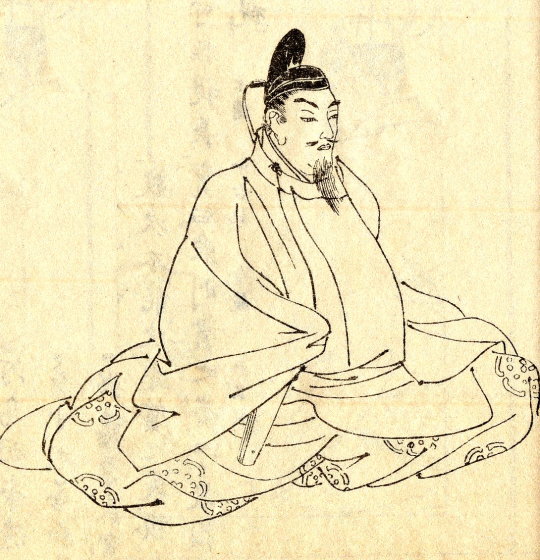
Ōe no Masafusa (wikimedia commons)
However, our main source of the early Japanese perception of immortals are not the early “national chronicles”, but rather Honchō Shinsenden (本朝神仙伝). Its author was Ōe no Masafusa (1041-1111), an official and scholar from the Heian period. His career culminated when he was appointed to the prestigious position of the governor of Kyushu, though he eventually abdicated to dedicate himself to writing. His work is classified as an example of setsuwa. At the same time it is also firmly tied to the already discussed tradition of Chinese secular immortal literature, and can effectively be considered an attempt at creating a Japanese equivalent of collections of biographies of immortals. Obviously it has its own unique peculiarities to offer too.
Masafusa’s work presents an interesting case of fusion of the Taoist-influenced Chinese notion of immortality with Buddhist ideas: the immortals are compared to hijiri (Buddhist “holy men”) and “living Buddhas” (ikibotoke). This is not entirely a novelty, as while Buddhists are absent from Chinese compilations of biographies of immortals, Laozi’s ascent to immortality was nonetheless at times described in similar terms as Buddhist Nirvana, at least in sources from the fifth century. There was also a preexisting Buddhist tradition of legendary long-lived patriarchs awaiting the coming of Maitreya or simply extending their lifespans to save more beings. Therefore, while innovative, this combination of Taoist and Buddhist elements was hardly something unparalleled or contradictory.
The selection of figures described as immortals in Honchō Shinsenden is also a bit different than in its Chinese forerunners. Legendary heroes and historical statesmen do show up, as expected. However, alchemists and members of Taoist clergy are missing, since they were not exactly common in Japan. Buddhist monks effectively replace them as the main social group among immortals, though it does not seem religious devotion is the deciding factor. Ultimately there is no clear pattern, not even that of virtuous life: Masafusa’s immortals as a group are not meant to be moral examples, even though some of them are portrayed as paragons of virtue.
It seems ultimately what Masafusa wanted to do is present stories he personally found interesting or awe-inspiring, and there was no religious aim behind his work. Some of his choices were actually criticized as inappropriate by his contemporaries, in particular the inclusions of Zenchū and Zensan, who according to polemics were not immortals, but merely devout Buddhists taken into a Pure Land (a heavenly realm created by and inhabited by a Buddha) in their current forms, without reincarnation. This argument follows the well established aspect of esoteric Buddhist doctrine, which enabled the possibility of achieving enlightenment in one’s current incarnation.
A total of thirty seven tales formed the original manuscript, though not all of them survive. They range from long, grandiose narratives about figures like Yamato Takeru and En no Gyoja to brief, almost comedic accounts of the tribulations of anonymous figures such as the “stick-beaten immortal” (who learned how to levitate, but only up to the height of one shaku, which meant that he could not even escape children hitting him with sticks) or the “old seller of white chopsticks” (whose title tells you a lot about his economic situation). Only two are ultimately important here, though: those of the semi-historical prince Shotoku, and the firmly historical poet, historian and eccentric Miyako no Yoshika.
Simply put, I believe Honchō Shinsenden is responsible both for the portrayal of Shotoku as a Taoist immortal and for the inclusion of a character (vaguely) based on Miyako no Yoshika in Ten Desires.
Honchō Shinsenden’s Shotoku and Toyosatomimi no Miko

The image of prince Shotoku through the ages
Prince Shotoku (聖徳太子) is one of the highest profile figures to ever be portrayed in Touhou, and as such arguably requires no lengthy introduction. He purportedly lived from February 7, 574 to April 8, 622, and served as a regent on behalf of his aunt, empress Suiko. He is traditionally credited with spreading Buddhism in Japan, ordaining numerous monks, writing commentaries on sutras, vanquishing rivals such as Mononobe no Moriya with the help of the Soga clan, and so on. He might have not existed at all, or perhaps he did, but played nowhere near as major of a role in Japanese history as traditionally assumed. The academic debate started a few decades ago, and remains ongoing. Its outcome isn’t really important here, since regardless of Shotoku’s disputed historicity, he came to be well established both as a religious figure and as a literary character. At various points in time and for various people, Shotoku was, in no particular order, the ideal statesman, a manifestation of Kannon, a peerless military commander, a yaoi protagonist and, most importantly, an immortal.
In Honchō Shinsenden, Shotoku is referred to as “prince Jōgu” (上宮), though we do get the mandatory Shotoku namedrop indirectly when his virtue (聖徳) is highlighted.. He is actually one of the two only of the listed immortals who can be classified at least vaguely as “statesmen”, the other being Yamato Takeru. For unknown reasons, Masafusa got some details wrong: according to him Shotoku’s father was Bidatsu. This view is unparalleled, and there is no real reason to doubt the conventional genealogy, which firmly positions him as a son of Yomei and his half-sister Anahobe no Hashihito. We learn that his birth was foretold by a dream in which his mother saw a golden figure who entrusted her with a child who will spread the dharma. This is in itself a combination of Taoist and Buddhist elements, seemingly an attempt at imitating a legend about the birth of Laozi, which in turn depended on a legend about the birth of the historical Buddha.
Naturally, Shotoku already displayed supernatural abilities as a child. Masafusa reports that whoever touched him was imbued with a “lasting fragrance”. A variant of the well known tale which his Touhou counterpart’s name and ability reference is presented here too, though a key detail differs - Shotoku can listen to eight, rather than ten, people according to Masafusa. This is not unparalleled, and therefore probably isn’t a mistake unlike the unexpected genealogical change mentioned before.
A major event from Shotoku’s life relayed by Honchō Shinsenden is an alleged meeting between him and Illa (Nichira), a Korean monk living in Japan. The historicity of this episode is debatable, as Illa died when Shotoku (if he was real in the first place, of course) was only eleven years old. He identifies the prince as the bodhisattva Kannon, and pays respect to him as such. In response Shotoku emitted a beam of light from between his eyebrows, which reflects both Taoist and Buddhist traditions about manifesting supernatural powers.

Illa's alter ego Atago Gongen (wikimedia commons)
Interestingly, Illa responds by doing the same, thus revealing his own supernatural character. We know from other sources that Illa could be identified as the true identity of Atago Gongen, the tengu-like deity of Mount Atago. Bernard Faure notes parallels can be drawn between his portrayals as a foreign supernatural ally of Shotoku and as the human alter ego of a deity with the traditions pertaining to Hata no Kawakatsu. There is also an “immortal of Mount Atago” in Honchō Shinsenden, but his identity is left unspecified. It's worth noting that in Symposium of Post-Mysticism Byakuren and Marisa at one point discuss the existence of “hermit-like tengu”. Illa truthers… we can make it happen if we believe strong enough… Jokes aside, I’m actually cautiously optimistic that Illa might some day end up being the first Korean character in Touhou, at least implicitly. Given the inclusion of references to Hata no Kawakatsu, odds are decent ZUN knows about him too.
In another anecdote, we are introduced to another member of Shotoku’s supernatural supporting cast, the black steed of Kai. This horse is credited with being able to travel the distance of a thousand ri in a single move. This is seemingly an adaptation of a Taoist motif too, as immortals were believed to favor traveling on supernaturally fast steeds, or in cloud chariots drawn by such animals, or to move instantaneously through other means. The fabulous distance of 1000 (or even 10000) ri is conventional, too.
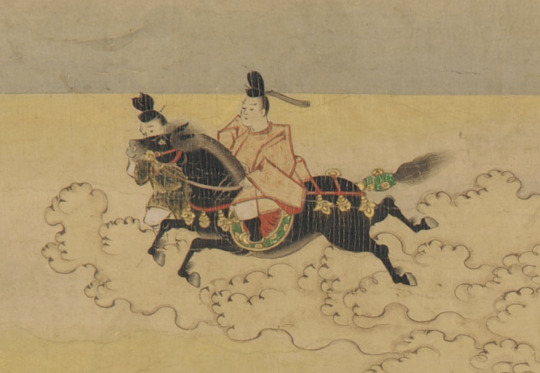
Shotoku traveling through the sky on his supernatural horse (Smithsonian Institution; reproduced here for educational purposes only)
Of course, the black steed (kurokoma) is also the very same horse that served as the basis for Saki. While allusions to this connection is probably the second most common genre of fanart of her, it surprisingly took ZUN four whole years to acknowledge it outside of a track title, specifically through two lines in the vs mode of Unlimited Dream of All Living Ghost. Time will tell if anything will come out of it, I’m personally skeptical seeing as we have yet to see a canon work do anything with the connection between Okina and Hata no Kawakatsu even though it was acknowledged in an interview. I hope I am wrong, though.
Shotoku’s various accomplishments are not described in detail, though Masafusa does bring up his famous seventeen articles constitution and the establishment of Shitenno-ji, and additionally states that teachings linked to the Yuezhi people from Central Asia were associated with it (unique opportunity to justify bringing Central Asian deities like Nana and Weshparkar into Touhou).
The final and most important part of Shotoku’s biography, the circumstances of his death - or rather his acquisition of immortality - is only partially preserved. According to Masafusa, one day he simply informed his wife (presumably Kawashide no Iratsume, as opposed to one of the other three wives) that he cannot exist anymore in a “defiled” world and “transformed” himself. It is actually not explained how he even mastered the techniques allowing that, presumably because we are meant to attribute this miraculous feat to his status as a saintly Buddhist. The authors behind the most recent English translation, Christoph Kleine and Livia Kohn, suggest that in the lost final sentence(s) Masafusa might have combined the Taoist take on immortality with Amida’s pure land, but this is ultimately speculative.
ZUN actually went for something closer to the Chinese model with Miko - she was explicitly taught by Seiga. The notion of immortals mentoring those they deem worthy to pursue the same path is a widespread motif, and even some of the Eight Immortals gained their status this way. This idea is absent altogether from Honchō Shinsenden, perhaps since it was tied to formal transfer of Taoist teachings. While this is an innovation, I would argue it’s still true to Shotoku legends, considering they are already filled with miracle-working visitors from distant lands, from Illa and Hata no Kawakatsu to considerably more famous Bodhidharma.
From eccentric to immortal: the literary afterlife of Miyako no Yoshika

Miyako no Yoshika (wikimedia commons)
As I already said, the second tale from Honchō Shinsenden relevant to Ten Desires is that focused on Miyako no Yoshika. He obviously shares no direct connection with prince Shotoku. Or with Qing’e, for that matter. Unlike prince Shotoku, he left a solid paper trail behind, and there’s no doubt that despite having quite a career as a legendary figure, he was originally a historical person. He lived from 834 to 879, in the Heian period. He was a calligrapher, a poet, an imperial official and for a brief time even an assistant to the envoy to Bohai (Balhae). The inclusion of a character based on him in Ten Desires might seem puzzling at first glance, since none of this seems particularly relevant to the game, and Yoshika’s omake bio doesn’t say much that helps here, beyond calling her a “corpse from ancient Japan”. However, I believe Honchō Shinsenden sheds some light on this mystery.
In Honchō Shinsenden, Miyako no Yoshika belongs to the small category of literati pursuing immortality, a status he only shares with Tachibana no Masamichi. There are a number of other immortals listed who are neither monks nor statesmen, and can be broadly classified as laypeople, though none of them seem to have much to do with those two. In contrast with figures like prince Shotoku, described as pious sages, the fictionalized take on Yoshika is meant to highlight extreme eccentricity instead. This is an element common in accounts of Chinese immortals’ lives too, as I highlighted before. You might also remember this topic from the Zanmu article from last month.
As we learn, Yoshika, who was originally known as Kuwahara (misread by Masafusa as Haraaka, an actually unattested surname) no Kotomichi but changed first his family name (for unknown reasons) and then also his given name because of a poem he liked, decided to become an immortal under rather unusual circumstances. In the very beginning of his career, after spending a night with the concubine of an official from the Bureau of Examination who was meant to examine him the next day, Yoshika decided that his goal in life should be to become an “eccentric immortal”. He passed his official exam without any trouble, with an unparalleled score. Graffiti in the academy he attended proclaimed him the “world’s greatest maniac” (so he comes prepackaged with a Touhou-appropriate title). He attained widespread acclaim for his wit and poetic skill. In his free time, he engages in celebrated literati pastimes such as drinking and sleeping with courtesans (Masafusa does not specify if he wrote about that, like his Tang counterparts did).
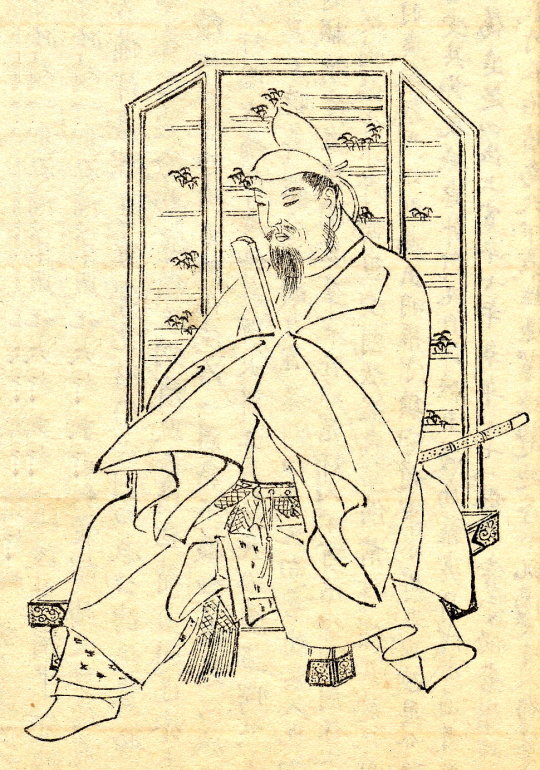
Sugawara no Michizane, Yoshika's apparent nemesis (wikimedia commons)
Alas, Yoshika’s career ultimately did not go entirely according to his whims. The beginning of the end was the day when he acted as the examiner of a new rising star, Sugawa no Michizane. The latter has proven himself to be even more skilled than him, and eventually rose to a higher rank than Yoshika. The latter could not bear this perceived offense against him and one day left his life behind to return to the pursuit of immortality. He aimed at the mountains, hoping to find immortals there to learn their techniques. Masafusa does not provide much detail about his further life, but states that after many journeys he evidently accomplished his goal, as he was purportedly seen alive and well a century after his alleged death.
It’s worth pointing out here that this course of events follows a Taoist motif: becoming disillusioned with one's own career, or with earthly affairs in general, is a common catalyst for search of the Taoist way in literature. A point can actually be made that of all the immortals in the Honchō Shinsenden is the most quintessentially Taoist one (despite not actually being a Taoist), the most direct example of the Chinese model being adapted for a Japanese historical figure, with no addition of the Buddhist components. He even resembles the typical image of a Tang scholar-bureaucrat invested in search for immortality just as much as in amorous adventures. This arguably makes him the perfect basis for a character in a game centered on Taoist immortals in Japan, though truth to be told I feel that in contrast with Seiga and Miko, ZUN’s Yoshika does not live up to her forerunner.
Legends about Miyako no Yoshika in other sources, or the remarkable poetic career of Ibaraki-doji
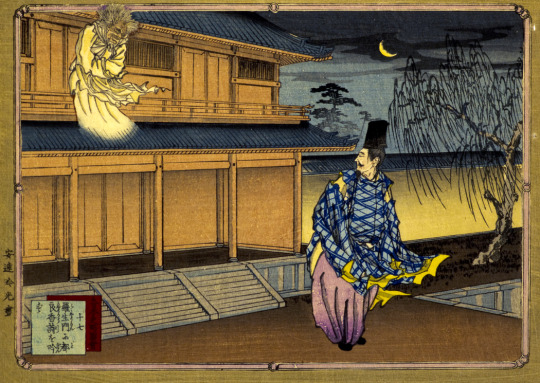
The oni of Rashomon and Miyako no Yoshika, as depicted by Ginko Adachi (Yokohama Art Museum; reproduced here for educational purposes only)
Some of you might wonder where Ibaraki-doji fits into this, considering the pretty direct reference to Yoshika's poetry in Wild and Horned Hermit. Masafusa, as a matter of fact, does allude to one more legend while highlighting Yoshika’s poetic talent, though he doesn’t go into detail. There’s no direct supernatural encounter - a nameless demonic inhabitant of Kyoto’s gate only hears a poem from passersby marveling at it and becomes “deeply moved”, but that’s it. The name Ibaraki-doji doesn’t show up at all, and there’s no mention of the oni finishing the poem, which is a mainstay of later versions.
Another of Masafusa’s works, Gōdansho (江談抄), also doesn’t use the name Ibaraki-dōji, or mention an actual encounter between Yoshika and the oni - he merely hears an unnamed passerby hum the poem and comments on it, calling it touching. However, the Kamakura period collection Jikkinshō already presents the version which gained the most traction in the long run, with the poem being a collaboration between Miyako no Yoshika and an oni. He later recites the full composition to Sugawara no Michizane, who is correctly able to point out only some of it is Yoshika’s own work, while the rest was added by an oni. However, once again, the name Ibaraki-doji is nowhere to be found.
On the other hand, while the story of Ibaraki-doji can be found in Taiheiki and other similar sources, it takes place far away from the capital in these early versions. The location was changed in noh adaptations of the legend to Rashomon, presumably due to its preexisting associations with supernatural creatures. By the time Toriyama Sekien published one if his famous bestiaries, Konjaku Hyakki Shūi, it seems the idea that the oni inhabiting this gate who was encountered by Yoshika and Watanabe no Tsuna’s nemesis Ibaraki-doji, who fought him there, were one and the same was already well established. Note that Sekien’s description of the oni of Rashomon actually doesn’t use the name Ibaraki-doji, though we do know he was aware of it.
It’s worth noting that the oni of Rashomon seemingly had a broader interest in fine arts, since there is also a legend in which he meets the famous biwa player Minamoto no Hiromasa and shows him his own skills with this instrument. However, this is ultimately not directly relevant to Yoshika, so you will have to wait until the next article, which will cover Shuten-doji and Ibaraki-doji in detail, to learn more.

The oni of Rashomon, as depicted by Toriyama Sekien (wikimedia commons)
Bibliography
Bernard Faure, From Bodhidharma to Daruma : The Hidden Life of a Zen Patriarch
Xiaofei Kang, The Cult of the Fox: Power, Gender, and Popular Religion in Late Imperial and Modern China
Zornica Kirkova, Roaming into the Beyond: Representations of Xian Immortality in Early Medieval Chinese Verse
Christoph Kleine & Livia Kohn, Daoist Immortality and Buddhist Holiness: A Study and Translation of the Honchō shinsen-den
Michelle Osterfeld Li, Ambiguous Bodies. Reading the Grotesque in Japanese Setsuwa Tales
Masato Mori, "Konjaku Monogatari-shū": Supernatural Creatures and Order
Masuo Shin'ichirō, Daoism in Japan (published in Brill’s Daoism Handbook)
Leslie Wallace, Betwixt and Between: Depictions of Immortals in Eastern Han Dynasty Tomb Reliefs
288 notes
·
View notes
Text
I'm running a few days behind on Satine Week, but I finally finished a very short fic (just under 600 words) set during the Manadalore Mission (pre-Episode I) for the prompt "Jewel".
...
Satine let out an exasperated huff as she set her data reader aside with more vehemence than necessary.
“What?” Obi-Wan prompted. He also set aside the archaeology periodical he was browsing on his own reader, knowing from prior experience that if he ignored such displays she’d only sulk. After all, if the ruins of the temple uncovered by Master Cordova had waited centuries for discovery, his study on the topic could wait until Satine had vented her ire a little.
She picked up the reader again, showing him the headline that had so offended her. He squinted at the thin, spiky Mandalorian runes, deciphering and translating as fast as he could before she grew impatient.
“’The Jewel of Kalevala’,” he read aloud, demonstrating his growing fluency in Mando’a. She didn’t correct him, so he assumed he’d translated correctly. She was evidently too annoyed to be impressed with his intellect just then, and he tried not to be overly put out at the wasted effort. “That’s you?” he concluded, uncertain.
“Oh, indeed,” she repeated, voice falsely smooth, the expression on her beautiful face deeply indignant.
“That’s…bad?” Truthfully, he was perplexed. It didn’t seem like such a negative epithet. In fact, he thought it rather fitting, though he knew better than to say as much when she was making that face.
“Of course it is,” she said, tossing the reader back onto the table.
He crossed his arms across his chest, tucking his hands into the sleeves of his robe. “Then I suppose it doesn’t mean that you are… treasured, beautiful?”
“In Basic perhaps,” she conceded a bit more calmly, showing forbearance with his ignorance of her culture despite her peevishness. “To a Mandalorian, the implication is…” She paused to gesture, her hand graceful even as she waved it about in frustration. “A sparkling bauble. Something frivolous, merely decorative, without strength or purpose.”
“All that in one word?”
She shrugged. “If Mandalorians excel at something besides pointless destruction, it’s insulting each other with economy.”
He reached to unclip his lightsaber from his belt and set it on the table in front of him.
She cocked her head, fair brows furrowing in a charmingly perplexed expression. “Are you going to fight the data reader on my behalf?” she asked with a soft snort of a laugh.
He spared her a half-smile before he turned back to the saber, deactivating the power cell and starting to unfasten the casing. “Obviously not. I want to show you something.”
Her intent gaze did distract him a little as he went through the familiar motions of disassembling his lightsaber. He slowed a little lest he fumble a critical component in self conscious clumsiness. Still, it only took a few moments to reveal the kyber crystal. He turned it a little, letting it catch the light. It sparkled, clear as ice, and seemed to glow from within.
“When you say ‘jewel’, this is what I think of,” he explained. “That’s why I thought the word suited you,” he added, glancing at her quickly. He bit his tongue before he waxed poetic about the color of her eyes. She was clearly in no mood for flattery about her looks, even if it was genuine.
“It is beautiful,” she breathed.
“It is, but it’s more than that as well. It channels energy, amplifies the Light. It’s incredibly precious, remarkably powerful.”
“I wish that’s what they meant,” she said sadly.
“You will show them what kind of jewel you are,” he promised.
“I will certainly try,” she agreed, reaching out to take his hand.
64 notes
·
View notes
Text
👑ATTENTION👑AEGON X AFAB READER OC (NON-WESTEROSI OC) MODERN & COLLEGE SETTING
Aegon x Reader
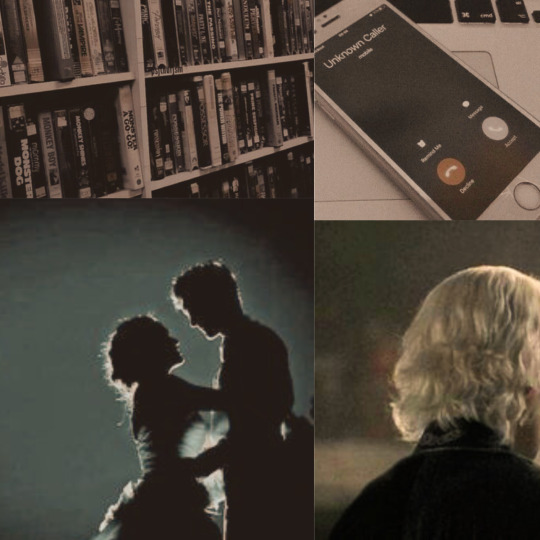
Tags: Fluffish, royalty, modernroyalty, theprinceandme

🔷Summary: You are studying in college and you fall for a mysterious boy named Aeg. Who hides a dark secret.
🔷Author's note: Based on the movie, the Prince and Me.
🔷Wordcount :3547
🔷Warnings: It is not a very dark or triggering fic. If you found something that upsets you, however let me know ill change the warnings
It is cold. It is so fucking cold. You keep repeating that in your head, as you cling your books to your chest, shielding them from the rain as you run over campus. Earlier today, your backpack committed the worst betrayal in history since centuries, and one of the straps ripped. So now you carry your books around. It is also a bit misty, darkish and overall not a fun time to be outside.
You make out the sign of the building where your archeology class is taking place. You finally found it. Last year, they hosted it in the other building, much closer to your dorm. But for some reason, it now is in the new science building. You don’t know why, and you don’t have time to care. You cross the streets.
Perhaps without looking. Perhaps you look too late. Either way, a black, sleek, luxurious car with a dragon logo on the hood nearly hits you. You huff at the audacity of this asshole to drive that fast on college ground, and try to look in the car. The windows are blinded. You can’t see who is in it. They can see you however. You raise your middle finger, before you head off to class. You don’t notice the window rolling down and someone looking at you, with piercing bright blue eyes and a smirk on his lips.
–
The teacher forgave you for being late. You are a good student, and never would be late on purpose. She listened to your apologies and you explained to her the bag situation, which she understood, but also could laugh at. ‘’Why, you always have the worst of luck, don’t you?’’ she joked. Now you are reading your books, making assignments and studying an ancient old stone.
The incident with the car has long left your mind. Your books are more interesting. Until the door of the classroom is opened and a handsome young man enters. You see him look at papers in his hand, which is likely his route and his schedule of where his classes are. He introduces himself as Aeg and to your horror he sits down right next to you, on the only free spot in class. He smells nice, like rain and aftershave. ‘’I’m Aeg.’’ He says, addressing you for the first time in your life. ‘’I’m uh, new.’’ His accent betrayed that he is from Westeros and from the Crownlands, like most students. You take one glance at him and see him looking back, your eyes meeting and your breath briefly stopped. He is gorgeous. Damn him.
‘’I can see that.’’ You reply, uninterested. You don’t need distractions. And Aeg, whoever he may be, is a distraction. You bend your head a bit further over your books, hoping to lose yourself in the magic of the Ancient Dornish statues you are studying. It does not happen, and to make things worse, Aeg is staring at you, full of interest and delight, a smirk on his lips as he studies you instead of the textbook.
‘’Don’t be like that. The teacher said I could sit with you. You are a nice girl. It’s literally what she said. I can use a friend. I’m new. I only have Cole with me.’’ He says. You sigh, and deep down you know you will regret this deeply. You know it.
‘’I am Ereys.’’ You say, ignoring the way his blue eyes keep piercing through your skin and skull. ‘’I study Archaeology. That’s what you should be doing, by the way.’’ You say. Aeg snorts, laughing loudly and draws more attention to your shared table. Embarrassed, you lower yourself a bit more, hoping to bury yourself in your books.
‘’I’m Aegon, but you can call me Aeg.’’ He says. ‘’I never studied Archaeology or history before. Perhaps you can tell me where we are with the studies, as well as tell me…’’ He smirks, looking at you a bit funnily. You raise a brow, confused.
‘’Do you have a boyfriend?’’ You don’t know where this question came from or how it is related to archelogy but you sure as hell don’t want to answer that weasel anymore.
You blow up. ‘’That’s none of your business. Go ask someone else.’’ To your horror, your voice is uncontrolled and even more eyes are glued on you and Aegon now.
He does not seem to even be slightly insulted, grinning at your rejection. ‘’Ah, come on, darling. Didn’t mean to insult you. Just a complement, sweetheart.’’ He says. His voice becomes a bit more serious and he sits up, instead of hanging in the chair. ‘’But if I truly insulted you, I apologize.’’
‘’Hmph.’’
The rest of the class you are both silent, save for Aegon who keeps smirking and smiling at you, clearly trying to get you to let your walls down. You won’t let it happen.
At long last, classes end and you are released.
—--
That evening, it is your turn at the Red Dragon the local college bar to handle the crowd. Lots of students come to unwind, have a drink, a snack, and a flirt before their classes are back on in the morning. It earns decently, and your boss makes sure that everyone behaves or is kicked out of the bar.
Two of your close friends, Jayne and Alysanna hang out near the bar, trying to get more details out of your summer. ‘’Come on! Tell me, did you at least hook up last summer?’’ Jayne asks, on her fourth martini of that night. Alysanna smacks her arm, berating her instantly, the mom friend of the group.
Bless her. ‘’Ereys is just busy. She can have any guy she wants to have. She chooses to focus on her studies.’’ Alys says, grinning. ‘’Like if she wanted, any guy would be on their knees.’’ You roll your eyes.
‘’Hear hear.’’ You comment, giving two waiting jocks with red dragon tunics both a beer and a sandwich you just made for them. They leave, and you watch them go to their friends at the table in the corner, likely returning to their games for that evening.
Jayne is not ready to let the conversation die. ‘’I mean, I saw what joined you at Archaeology class and I have to say; You have more willpower and restraint than me.’’ You frown at her words. Aeg is not a what, and how the hell did she know? She studies marine biology, which is 2 floors above you. No way she could have seen Aeg. No way unless…..
‘’Stop using that fucking app!’’ Alys grabs the phone from Jayne. ‘’It’s fucking dehumantising.’’ She has a point. Women, men, non binary, something or someone else: It does not matter, this app does not discriminate, if you’re hot, you get called a lot of things.
Jayne, however is…Jayne.‘’Nah-ah! How else am I supposed to know what hot guy is new on campus? Have you seen how massive this place is? I need the app!” You know that app. It’s created by some tech devs with a god complex and it basically tracks relation drama, hot new guys, anything you don’t want to get caught up in on campus.
You watch as Jayne takes of running in her heels, chased by Alys on her sneakers, and you are shocked to see how fast both are. Someone clears his throat and you are reminded you have a job.
‘’Two beer.’’ Oh no. You know that voice.
In front of you, is Aeg. He is wearing a dorky shirt which looks like someone with a high office job would wear. His hair is pushed back neatly and you assume he spent a few hours on it. And he smells nice. Again. Aeg seems to recognize you too, grinning and sitting down while you grab the beer from the fridge. ‘’You look damn good behind a bar.’’ He says. ‘’You seem at home here. Everywhere, really.’’
You place it in front of Aeg. ‘’That’ll be 8 coins.’’ You say. Aeg happily grins, giving you 10 coins instead of 8. He looks around him, before closing in, leaning on the bar with a drunken smirk and you know you are done for. ‘’Hey, uhm. I want to see your boobs.’’ You can’t have heard that one right.
‘’’Excuse you?’’ He is drunk but that is no excuse.
‘’It’ll be just for me.’’ He promises, in a bar, filled with people, cameras, phones, everyone. You back away, disgusted and grab the hose that is used to fill beer cups. Instead of giving him a piece of your mind, you decide that it's time for action. You press the spray button and spray Aeg in rich, brown beer, soaking his shirt. A man with dark black hair and a Dornish look jumps from his chair as if you offended him and rushes to Aeg, who is confused.
Your boss, Laenor interferes, addressing the man instead of Aeg. ‘’You. Take your friend out of my fucking bar. I heard what he said to my employee. We don’t want that kind of shit here, or anywhere. OK?’’
The man nods, and drags Aegon off away from you, and the bar.
—
When you wake up, you have forgotten the incident with Aeg and the strange man. It is Saturday. You have no classes and you are relaxing, in bed, still snoozing peacefully….
Until someone is knocking at your door. You throw your bathrobe on, close it and open your door. You are surprised to see who’s there. He smiles at you. You try to slam the door in his face, but he sets one foot in the door. ‘’Please, let me explain.’’ He begs. ‘’I was a fucking asshole.’’
Ding ding ding! ‘’Yes. You were.’’ You try to kick him out once more. Aeg begins pouting, and you allow him in your dorm, knowing he won’t give up anyway.
‘’I am sorry, Ereys. I got drunk real bad. I never would have said that if I was sober. But that is no excuse.’’ He looks at his shoes first, but halfway through his apology he looks at your face. ‘’Also my driver almost hit you, on the way to class.’’
You find that a bit odd. Does he have a driver? ‘’You have a driver?’’
Aeg pales. ‘’Eh, my friend, Cole. He studies here too. He dropped me off. He almost hit you though.’’ You think back of the fancy car and you know something is not adding up. Yet you accept Aegon’s apology of him and his…driver.
‘’Apology accepted.’’ You say. ‘’For one reason.’’ You add with a smirk.
He looks a bit like a puppy that got hurt and you feel bad about making him do this. But someone has to do it. And it won’t be you for sure. ‘’Anything.’’ He begs, looking in your eyes with such sadness that can only be seen in Disney movies.
You cackle. ‘’Oh, I love it when souls say such things. Give me a moment.’’
‘’Souls?’’ Aegon mutters, as you push him out of the room so you can get dressed.
—
‘’Dragon drinks! Dragon drinks! It helps the pain and it helps you think! Dragon drinks!’’ A few moments later, you are sitting beneath a umbrella outside the Red Dragon, while Aegon is in costume, the red cursed dragon costume, advertising.
While Aegon does your job, and he does it really well, you enjoy the water and study some books. Aegon sometimes tries to get close to you, but one glare and he knows he is pushing it. But then Aegon sees a passing crowd of students, and instead of bothering you, he tries to lure them to the bar. ‘’Roar!’’ You clutch at your heart, scared to death by his roar. ‘’You there! You all seem cool! Come here, drink, and forget school!’’ You see one girl take her phone out. Aegon beams, proud he did his job well.
Until she snaps a photo and walks away, laughing with her friends. You see Aegon’s confidence had a big hit and you feel a bit sad for the dragon. ‘’Don’t let it bother you. Just keep being you. You’re actually really good at this.’’ He isn’t.
But Aegon beams. ‘’Yeah? Oh, I don’t I have ever been…’’ He roars again, puffing his chest, and this time a few customers pass in front of the bar. Aegon roars again, dancing. You can see that he is from Westeros, indeed.
You beg the people with their eyes to please get a drink, and they do. Aegon cheers victorious as they walk in. ‘’This is actually really nice, Ereys. I don’t think I ever have done something this silly.’’ He confesses, smiling. ‘’Thank you for the opportunity.’’
You wave his praise away. ‘’Yeah, yeah.’’ He ignores you, focusing on a new group to lure in.
When you attend the bar later, there is a shocking surprise. You had just done your hair on a bun and put your best foot in front of the other, and mentally prepared yourself. But someone else is at the bar, wearing a black shirt, with jeans, and a namepin. He is leaning on the bar, smiling as girls crowd around him, ordering drinks just to get a talk with him. Aegon.
You march over to the girls. ‘’Hello. Aegon. This bar is for employees. You are a customer.’’ He grins, smirking at you, and checking you out at the same time.
‘’I got a job.’’ He reveals. ‘’Say hello to your new coworker.’’ He winks. You should be happy, as you have come to like Aegon. But your heart cannot allow him too close.
You can’t work with his eyes on you. You look for Laenor and walk to him. ‘’Uhm, you gave Aegon a job?’’ You have no idea how to bring it gently, so you don’t.
Laenor laughs, nodding. ‘’Yeah, he was good in the dragon costume. He has passion and spirit, charisma and good looks. All things you need when running a bar.’’ A few girls giggle in the background and you are annoyed that you thought Aegon actually liked you.
You don’t see that his eyes are glued on you, watching your every move, not even hearing the girls.
Laenor is not going to fire him. No way. So you can either quit and say goodbye to your sweet cash or try to endure Aegon. You walk back to the bar and you notice that Aegon has been waiting for you. ‘’Girls. What shall it be?’’ You ask, preparing yourself for the drinks.
One girl with sunglasses inside huffs. ‘’We were in a conversation with Eggy.’’ She says, a bit whiny. ‘’Don’t you have a table to clean somewhere?’’ She asks, and her friends laugh.
You are ready to insult her back but Aegon beats you to it. ‘’Hey, that’s not cool. Ereys is right. This is a bar, not a zoo. You get drinks and pay or leave.’’ You are impressed at his maturity.
‘’Thanks.’’ You mutter after they have left. You reach for an empty glass at the same time as Aegon and your fingers brush.
He blushes. ‘’Anytime.’’
—-
As months pass and you and Aegon only grow closer and closer. You are unaware you are in love with him, but he knows he is love with you. You are busy cleaning tables and he cleans the glasses that were used during the shift. While he is busy, you ask him questions that he needs to know for his upcoming test.
‘’So, Nymeria’s statues. The big ones. What year?’’ You ask, as you clean some chewing gum from a table and nearly vomit.
But Aegon has improved. A lot. ‘’39 AC.’’ He grins. ‘’Easy peasy. Now for you: What did the writer Dynmeris meant with the sentence ‘’The sun cannot find the skies if the clouds are there?’’ You will so, so, so fail that literature class. Who cares? What sun? What clouds? Huh?
Gods help you.
‘’Uhm, it’s cloudy?’’ You guess.
Aegon nods, and you know you have answered wrong but he is too kind to say it. Defeated, you sit down on a chair, grumpy. He joins you, planting his ass on the table you just cleaned. Thank god for jeans. ‘’It can be a metaphor. For many things. For how you don’t know if you don’t try, for how you cannot achieve dreams without effort, and how you, I suppose, cannot find love if your heart isn't open for it.’’ He looks at you expectedly You nod. ‘’You see, the clouds are the obstacle, and the sky is the goal. But what is the sun? What does it represent?’’ You listen a bit longer to his explanation, and you suddenly feel a bit stuck. Maybe you are the clouds. And Aegon the sun. And you keep yourself from happiness. You have become happier and less snappy around Aegon and everyone seems to know it except you.
You love him.
‘’Aeg?’’ You whisper, your face heated so hot that it might explode. You see him nod.
‘’Yeah?’’ he asks, just as tense and smiling, despite being terrified you can tell.
‘’I uh, want you to kiss me.’’ You confess.
Aeg closes the distance between the two of you and gently caresses your face, as your lips finally lock in a soft gentle kiss. You never felt more alive, and kiss him back, touching his face and feeling his soft hair. He breaks the kiss, smiling deeply. ‘’Does this mean we’re a thing?’’
Wow, he moves fast.
‘’Uhm, it means I like you a bit more.’’ You say, keeping it casual. Aegon grins, still sitting on the table.
‘’I suppose I’ll just have to step up my game.’’
You would love to see what that looks like.
—--
Months later.
Finals are here and you and Aegon are in the library. You are officially dating and have become girlfriend and boyfriend. You try to focus on your books, but your eyes keep going to Aegon, who keeps smirking at you from his book, clearly not reading a word. His hands move down your thigh, and his smirk becomes suggestive. You feel your desire grow as he leans in a bit closer and kisses your neck. You mutter something. You close your book and drag Aegon from his chair, dragging him up to the second floor of the library, where almost no one comes. Aegon catches on, smiling, deeply in love and caresses your face. ‘’I love you Ereys.’’ He mutters, and you don’t know if he says that because you are about to hook up or because he loves you. Yet you turn your mind and insecurities off, and take your shirt off. Aegon follows, kissing your lips and taking his belt off. You both are lost in the passion.
Until, a camera flash interrupts it all. You let out a shriek and Aegon acts in a split second. He pulls his shirt over your head, covering you as quickly as possible. Two cameramen have appeared. ‘’Prince Aegon! Is this what you are doing on college grounds? The people demand to know!’’ One of them shouts. You feel ill. It makes sense.
Stupid too.
Aegon does not allow you to remain there, frozen and hurt. He drags you with him, as you both run away, between large bookshelves as the obvious paparazzi chases you. ‘’Prince Aegon, over here! Who is this lady? Prince Aegon!’’ Aegon doesn’t answer them. Getting you to safety is his priority.
When you are both safe outside, it has started raining. ‘’What the fuck was that?’’ You ask, in tears. Aegon sighs.
‘’I’m a Prince.’’ He says, and you never heard someone so upset that he is filthy rich. Cole. Cole is not his friend. He’s his bodyguard. Oh, oh you’re fucked.
A prince. You laugh. You never mattered to him. If you did he would've been honest. ‘’A what?’’
‘’A prince. Of House Targaryen.’’ This is madness.
You shake your head, in disbelief. He reaches out to touch you, to feel your love, your warmth. ‘’Ereys-’’
‘’Get away from me! You lied to me!’’ You yell, as tears fall down your cheeks. Hurt, Aegon backs off. He lied to you. And now your chest will likely cover some Westerosi magazine somewhere. You will be mocked, ridiculed by gods, knows how many people? And your trust, the walls he brought down, they’re skyhigh, and you know you won’t ever let anyone else get a shot.
He sighs, staring at his shoes. ‘’I never meant for them to find me here. I really like you. More than I liked anyone.’’ He says as he too sniffles, crying. ‘’I never wanted that stupid crown. They keep following me, I had hoped for a fun experience, but I never expected to find you. I love you and I mean it.’’
You shake your head. ‘’I was right not to trust you. I was right.’’ You repeat as you try to keep from crying, as your heart bleeds. It bleeds out from your chest. You take off running to your dorms and don’t look back.
a/n
i might make a part two if you guys dig it.
I got a busy mind and a lot on my hands
So get out of my way
And out of my hair
Cause I'm going somewhere
And I'm not in the mood for questions
And no I don't wanna talk
I don't wanna get in too deep
On whatever you think I am or do
And I'm not in the mood for questions
And if I was, I wouldn't let you in on the answers
Don't wanna lose my head
I stand up straight
I take a real deep breath
I never asked for attention
But now that I have your attention
I will play my part
I'll put on a face
And with all my heart
I never asked for attention
But now that I have your attention
I'll give you the best I can-
Attention Lyrcis what inspired the fic xD
#hotd#hotd fanfiction#hotd fanfic#Aegon II targaryen#aegon#modern aegon ii#hotd x reader#hotd x you#aegon ii x reader#aegon ii x you#aegon ii smut#aegon ii fic#aegon ii fanfiction#hotd x oc#aegon ii x oc
36 notes
·
View notes
Text
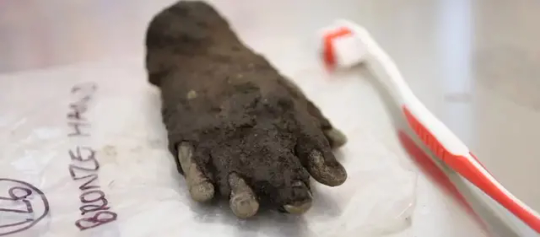
A Rare Bronze Hand Discovered in Vindolanda
One of Europe’s most important Roman archeological sites is the Fort of Vindolanda, one of the earliest Roman garrisons built by the Roman army in England. It was a Roman auxiliary near Hadrian’s Wall that guarded a major highway called the Stanegate.
Only a few weeks had passed since the start of the excavation season at Vindolanda when a remarkable artifact was discovered 1.5 meters below present-day ground level in the uppermost layers of the northern Severan ditch fill.
A small, child-sized, and eerily life-like bronze hand had been discarded in the ditch. Close inspection of the artifact after conservation at Vindolanda revealed that the 10cm hand originally had an attachment, now missing, inserted into the palm.
The hand is very well crafted, especially on the palm-facing side, indicating that its purpose was to profile the object that it once held. The base of the hand is socketed and would have been originally fixed to a pole.
The hand was uncovered some metres beyond a temple dedicated to Jupiter Dolichenus, tucked into the northern wall of the third-century fort at Vindolanda which was excavated in 2009.
The newly discovered hand most likely served a cult function and was possibly associated with Jupiter Dolichenus, a god and mystery cult that was popular in the Roman Empire from the early second to mid-third centuries AD.
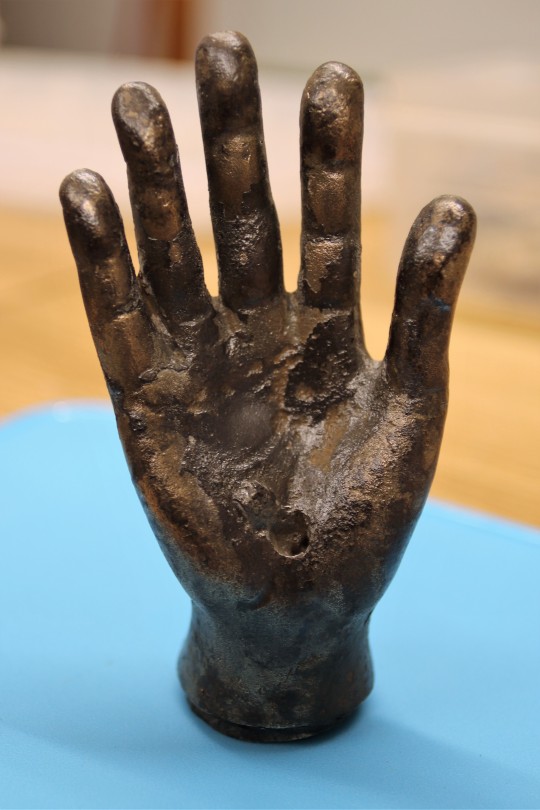
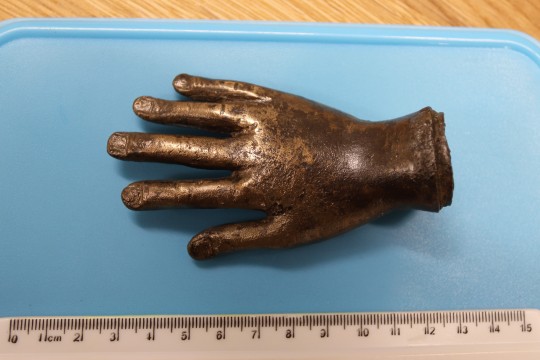
Similar votive hand specimens have been discovered in or near other Jupiter Dolichenus temples, though most are slightly larger than the Vindolanda specimen and some are fortunate enough to still have inscriptions mentioning the god.
Jupiter Dolichenus is depicted holding a thunderbolt in his hand with an upraised arm signifying his destructive power, the open votive hand symbolizes the protection and well-being that he could also bring.
The hand is now on public display in the same gallery as the altars dedicated to Jupiter Dolichenus at the Vindolanda Museum.
Between AD 85 and 370, nine timber or stone forts were built at Vindolanda, resulting in one of the most complex archaeological sites in Britain and a unique cultural legacy of frontier life.
Today, Vindolanda is an ongoing active archaeological site, with previous excavations uncovering thousands of perfectly preserved shoes, textiles, wooden objects, and the Vindolanda tablets (the oldest surviving documents in Britain that date from the 1st and 2nd century AD).
By Oğuz Büyükyıldırım.
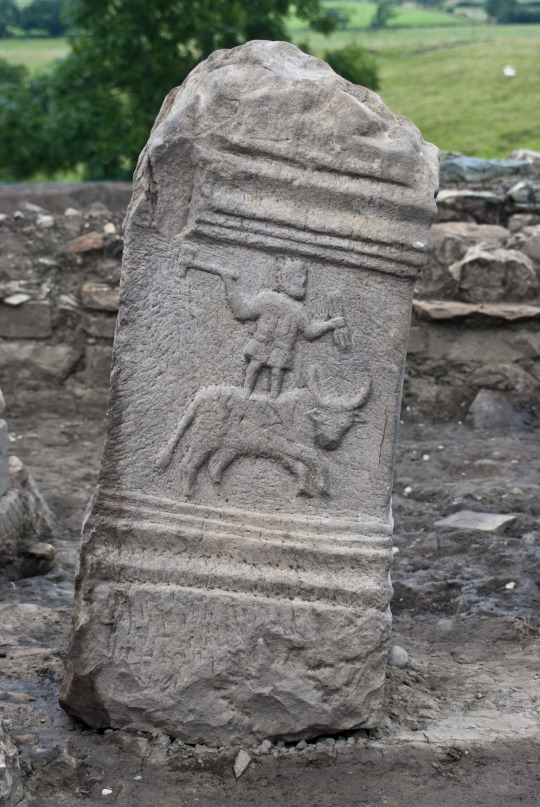

#A Rare Bronze Hand Discovered in Vindolanda#Hadrian’s Wall#bronze#bronze sculpture#ancient artifact#archeology#archeolgst#history#history news#ancient history#ancient culture#ancient civilizations#roman history#roman empire#roman art#roman legion
164 notes
·
View notes
Text
Library of Illusion — the Lobby

masterlist | next »»
➥ no pairing
wc: 2.5k
summary: With the death of her parents, Y/N inherits the house and finds a box of old research her father left behind that talks about a legendary place. After months of research and searching, Y/N has finally found it.
The Library of Illusion beckons.
genre/themes/au: fantasy, slight horror elements; non idol au
warnings: adult dialogue, female reader, mention of death
permanent taglist: @yoonguurt @wonderfulshinee @candidupped @dejavernon @violagoth @tigermoonbiss @katsukis1wife @luvsooby @thesolarplanetarysystem
ateez taglist: @2hodefender @cixrosie @pyeonghongrie-main @flowerboykun @sanjoongie @anyamaris @stardragongalaxy @kpop-stories-21 @wooyoungmybelovedhusband
special tags: @thelargefrye @hwasdollie
Join my taglists: permanent | group
a/n: here it is finally! I have been so FREAKING excited about this event since we first started planning it. I hope you all love it as much as I loved writing each part and before I go off on a tangent, I'll let you all read! As always, this is a work of fiction and all characters are not reflective of their respective irl counterparts. for entertainment purposes only. banner made by me. I do not allow reposts or translations of my works. All my works are ©️ kwanisms.
═══════════════════════════════════════════════════════
You’d always been told stories all throughout your youth about a mystical place known only as the Library. Your mother used to tell you grand stories about the place when she was putting you to sleep so she and your father could head out for an evening, leaving you in the care of a babysitter.
Your father always added onto these fantastical tales, painting vivid images with his words as he explained the Library in full detail, almost as if he had been there. The stories weren’t special to your family though. Lots of your peers heard similar tales, told to them by their parents at bed time.
And so it became sort of like a ritual. Until one day, it wasn’t.
You weren’t sure when you stopped caring about the wondrous and whimsical tales of the Library but it had to have been around the time you started showing an interest in things other than fairy tales.
Your parents still tried to instill the element of wonder into your life up until you left home, hoping to find something other than elaborate tales of a made up library.
Your parents were gone. Passed in an accident only a month ago today.
You hadn’t seen or spoken to them in years, preferring your circle of friends and work life you’d grown accustomed to.
After the funeral, you gained possession of everything they owned and while going through a box in the attic with only a bottle of wine to keep you company, you stumbled on something you probably never should have seen.
It was what you could only assume was a case file about a place called the Library of Illusion. As you flipped through the pages, sipping from your glass of red, your eyes widened reading the words you’d only heard from your parents' mouths as they tried to lull you to sleep at night.
Your father had been a professor of archaeology all throughout your life while your mother was an appraiser of rare antiques. They both loved old things.
As you scanned the documents you learned three things.
1. Your parents were obsessed with this Library, believing it to contain treasure.
2. Your parents, mainly your father had set about finding the location
3. Your father actually found the location just before his untimely death
As soon as you looked over the maps and checked it with known maps, the decision was made before you.
Wine in hand, you booked a flight, made accommodations, and hired a local guide.

Getting to the dense jungle where the Library was rumored to be was easy but traversing the jungle was another story. Your guide halfway through called it off but you were determined, taking the map and satellite phone and continuing alone on your journey which brought you to where you were now standing.
The Library was an very old stone structure, made of some kind of smooth sandstone. Most of it was covered in thick vines, the dense trees growing around the structure and making it seem very much a part of the jungle.
Two stone slab doors stood between you and the contents of the building as you checked your father’s notes, comparing them with the notebook he’d stashed with the other items.
Entering the library was no easy task but it wasn’t impossible.
A complex series of dials must be turned according to a riddle which was already solved by your parents. As you turned the last dial and it clicked into place, a mechanism behind the stone started to move and before your very eyes, the doors opened inward to reveal the inner corridor was nothing but a dark and empty void.
Taking the flashlight from your pack, you turned it on and headed inside, reminding yourself to put one foot in front of the other as you started into the blackness.
Your footsteps echoed around the walls as you walked down what seemed to be an impossibly long corridor, turning your flashlight around to keep a sharp eye on anything you might encounter from jungle animals to deadly insects or even plants. Your guide had warned you of the many dangers that awaited in not only the Library but the jungle as well.
Finally, just as you were about to give up, a dim light could be seen in the distance. Speeding up, you continued on your way, the first real sign of promise within your grasp.
As you neared what you assumed to be the end of the tunnel, the shape of the light grew in size until you emerged from the passage into a round room with a domed ceiling.
Around the walls were various bookshelves that had clearly seen better days. Old ruined books and stacks of yellowed paper lined the shelves and a thick layer of dust coated everything. Between breaks in the shelves were arched doorways.
You counted seven in total.
In the center of the room was what you could only describe as a stage, octagonal in shape and made of the same pale sandstone. Stone pillars stood in the eight corners, reaching from floor to domed ceiling and matched the same color of stone that everything else was made of.
Standing atop the stone stage, was a dark redwood desk. You carefully glanced around before ascending the few steps up to get a better look at the desk. It was a curved semi circular shape with a few stacks of aged paper as well as an old writing set.
As you inspected the desk, a voice rang out, echoing off the domed stone ceiling.
“Who are you?”
You nearly screamed as you jumped, spinning around to find you were not alone in the room as you had previously assumed.
Standing before you was a man. He had black hair, golden skin and was tall with a slim figure. He wore an entirely black ensemble, complete with a black brocade vest, black dress coat, and black trousers. His shoes were made of a shiny black leather with golden metal tips at the toe.
Your eyes snapped back up to meet his curious gaze.
When you didn't answer him, he spoke again.
“Who are you?”
Taking a quick breath, you answered him in a rush.
“I'm so sorry, I had no idea anyone was here!” The words burst from your mouth before you had a chance to stop them. You apologized profusely as the man looked at you, amused.
“Why are you apologizing?” he asked and you froze, uncertain of how you should respond before finally settling on an answer.
“I guess I just got nervous,” you answered sheepishly. The man tilted his head, like a puppy would upon having its name called.
“Why?”
You shrugged in response to his question. “I suppose I just wasn't expecting to meet anyone here.”
The man smiled again as he closed the distance between the two of you slowly, his footsteps echoing around the room with each step.
“And what are you doing here?” He asked. You hesitated to respond.
How exactly would you explain your reasoning for being here?
'My parents died and my father had a box of stuff relating to this place?'
No, he’d think you were absolutely mad.
Sensing your hesitation, the man took another step forward, climbing the steps one at a time. “You’d be surprised by the answers I get,” he started as he ascended the steps, stopping just before you.
You looked at him as he studied you. This close, you could see his dark brown, almost black eyes, darting around your face, seemingly taking in every feature.
“I’ve heard it all,” he continued, starting to circle you slowly as he looked over you.
“Fame, fortune, glory,” he rattled off as he continued to circle you like a predator.
“But what’s your excuse?”
You cleared your throat, turning to look at him behind you where he had stopped, meeting your gaze with an unreadable expression.
“Legacy I suppose,” you finally answered. The man’s eyes narrowed.
“Legacy?” His tone was curious and he waited for you to continue.
You decided there was no reason for you to lie and so you told him everything.
When you were done explaining the bedtime stories, the death of your parents, the inheritance, and finally the box in the attic, he continued to look at you curiously. “That’s a new one,” he admitted. “I’ve never heard of someone continuing in their parents’ steps before. So you aren’t here for the treasure?”
You shrugged again. “If there’s one to find, I’m not opposed to that, but that’s not entirely what brought me here. I’m fueled more by curiosity.”
The man smirked at you. “Curiosity is a dangerous thing,” he replied, continuing his circling from before. “They say curiosity killed the cat.”
His eyes met yours and you could have sworn you saw a flash of color in them.
Pushing it from your mind, you spoke up in retaliation.
“They also say satisfaction brought it back.”
The man’s smirk widened until he was chuckling.
"And so it did,” he said softly, moving to stand in front of you, his face mere inches from yours. “And is that what you hope to find, kitten? Satisfaction?”
Your stomach knotted at the use of the nickname, heat rushing to your core as you stared back at the man. “Perhaps,” you answered, trying to remain as unaffected as possible. The man chuckled again as he stepped around you and over to the desk.
“If it is satisfaction you seek,” he continued as he took a seat at the desk and glanced up at you. “Then perhaps you will find what you seek.” You watched him as he stared back at you.
"Satisfaction takes many forms," he continued, eyes studying you carefully. "I myself am also looking for it, in a way," he added before opening a drawer and reaching inside.
You watched as he pulled out a wooden box and set it on the desk.
You stared at it for a moment and then looked up at him. “What is it?”
The man gestured to the box. “Open it,” he said simply.
Sensing your reluctance, he sighed and reached over to undo the clasp holding the box shut and opened the lid, turning the box to show you the contents.
Or lack thereof.
You stepped forward, closing the distance between you and the desk to peer into the box.
A velvet lining covered the inside with indents in the material where something or rather a few somethings had been housed. Six of them to be precise.
“What’s this?” You asked, looking up from the interior of the box to meet his eyes.
“If you seek satisfaction, you’ll find it here in the Library,” he started, looking at you with his sharp eyes. “But to seek anything in this library, you need my permission first.” You narrowed your eyes at him.
“What, are you the librarian?” you snorted. The man smiled, clearly amused as well.
“Of sorts,” he answered. “Come,” he stated as he got up and beckoned you to follow him.
Descending the steps, you followed him around the room until he stopped near one of the doors. “Each door is locked,” he started to explain, taking the knob in his hand and trying to turn it and showing how it didn’t budge.
You glanced up at him as he looked down to meet your gaze.
“So how do I get in?” The man shook his head.
“You humans are always so eager. Just go in blindly without knowing what you’re looking for or who you’ll meet,” he said, sounding mildly annoyed.
It was your turn to sound annoyed.
“Okay, then explain it to me.”
The man crossed his arms over his chest and studied you for a moment before answering.
“I assume you don’t need an introduction to the Library. You clearly know what this place is.”
You nodded in response. “This place is home to a legendary treasure,” the man continued. You nodded again. “Yes, everyone knows that,” you interrupted.
The man’s smile was replaced with a frown. “Don’t interrupt,” he said sternly. You shifted uncomfortably under his gaze. “Sorry,” you whispered.
“As I was saying,” he continued. “A legendary treasure is hidden here. As you stated, everyone who knows about this place, knows this. What they don’t know is where that treasure is hidden,” he added, his smirk back as your eyes widened.
“And you do?”
The man nodded slowly. “That I do.”
“Well, that gives you a distinct advantage,” you replied. “Why not take the treasure for yourself?” The man laughed loudly at this.
“What need would I have for the treasure?” He asked, shoulders still shaking from his laughter as it started to subside. You shrugged your shoulders. “What need does anyone have for treasure?” You asked in response.
The man chuckled again. “You humans are always so predictable. Greedy, selfish, self destructive,” he said, stepping forward, forcing you to back up until you were caged between him and the end of a shelf. “Us humans?” You asked, realizing you hadn’t picked up on it before, but he’d referenced a difference between himself and your species.
“Are you saying you aren’t human?”
His smile widened as he looked down at you. “You’ve finally caught on,” he said, sounding both pleased and disappointed. “I figured you would have noticed by now.” You glanced over him quickly. “You look human,” you noted.
He shook his head. “You aren’t looking. Truly looking,” he replied.
Before you had a chance to ask what he meant, he pulled away.
“But we’re getting off topic,” he said, taking a few steps away and turning to look at you. Staring at him, trying to see what he meant earlier, you noticed something different. At first glance, he looked completely human but then his eyes did that same thing, a flash of color before they returned to the same dark brown.
He seemed to have an aura about him. Something you couldn’t quite see but you could catch glimpses of it. Almost like a flicker. As you stared at him, witnessing these phenomena, he smiled.
“There,” he said finally. “You see it.”
You stared in awe. “What are you?” You asked, not even realizing how rude it might sound. The man didn’t seem to mind however.
“I’m something your kind cannot comprehend,” he answered. “Not fully anyway.”
“Who are you?” You asked in response to his answer. He smiled wider.
“See, I asked you that same simple question earlier,” he said, in the same amused tone from before, the same smile present on his face as he studied you.
“A question you still haven't answered,” he noted, one of his eyebrows raising up.
You realized he was right. He’d asked you much earlier who you were and you hadn’t answered him. “I’m Y/N,” you replied. “Y/F/N Y/L/N.” The man crossed the short distance between you in moments, startling you.
“Nice to meet you, Y/N,” he replied, face inches from yours again.
“I’m Seonghwa and I’m the Keeper of Keys," he replied.
"Welcome to the Library of Illusion.”


#cultofdionysusnet#ateez scenarios#ateez imagines#ateez fanfiction#ateez fanfic#ateez angst#ateez x reader#series: library of illusion
371 notes
·
View notes
Text
7/?? germs.
(Previous) | (Index) | (Next)
⛬
We return to a movie that disrespects the archaeological importance of roads, Prometheus.
I am still not over that. I will never be over that.
This time, content warnings for continuing frat boy archaeology, cringeful application of racist terms to lily-white androids, me screeching about site contamination some more, and Apollo’s dodgeball striking this movie with a glancing blow about masking.
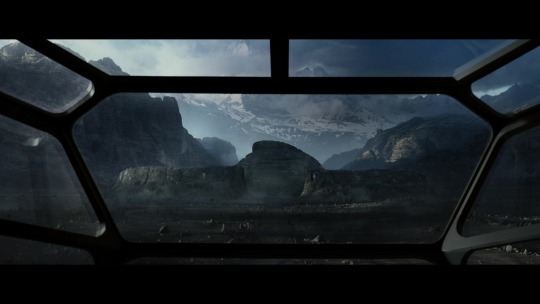
So, back in the theater in 2012, I had already lost sympathy for the cast. They were being set up as stock horror movie characters, they were doing their jobs in a way with a certain flair for the incompetent.
And one of them, I suspect, the movie intends to make into a “flawed but you feel for him” kind of guy. Or, I hope they intended to make him “the guy in the slasher movie who you hate and want to see die”. That’s Holloway, one of the two archaeologists. He’s robot racist.
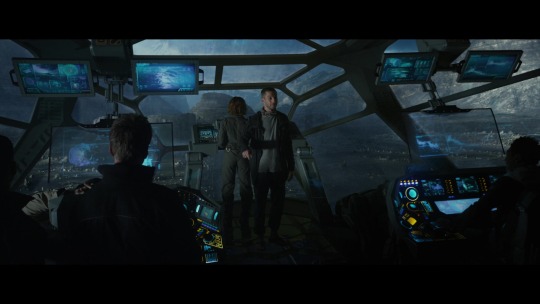
Like, seriously robot racist. The whole crew is, David literally gets referred to as “boy” here, which isn’t so much a dogwhistle as a tornado siren. No wonder David is quietly starting to show his disdain for the human crew.


“They're making you guys pretty close [to human now], huh?”
“Not too close, I hope.”
One of the few themes the movie handles halfway competently is the parallel between the humans stumbling all over themselves as they rush to go meet their makers, while David is already experiencing the disappointment of actually meeting his, and finding out they’re a bunch of clueless assholes. Are we supposed to believe the same of the Engineers? I don’t know. They definitely think of humans as lesser, though. More to come on that later.

Because right now, an expedition is barrelling toward the alien structure–again, driving all over the FCKING ALIEN ROAD–and they’re doing it with only six hours of daylight left, because Holloway literally says “It's Christmas [...] and I want to open my presents.”
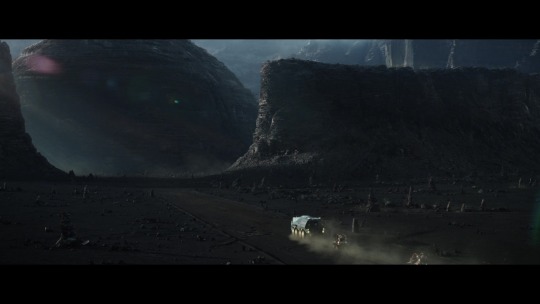

I cannot communicate how heinous this character felt. The actor did a perfectly fine job playing him, but if Charlie Holloway was real, his name would be said with the same venom as that of the man pictured below: Heinrich Schliemann, the man who found the real, actual city of Troy, and immediately dynamited a trench through the royal palace, destroying who knows how many artifacts from the period the Iliad was based off of. Yes, I picked out the most assholish-looking photo of him I could find on purpose.
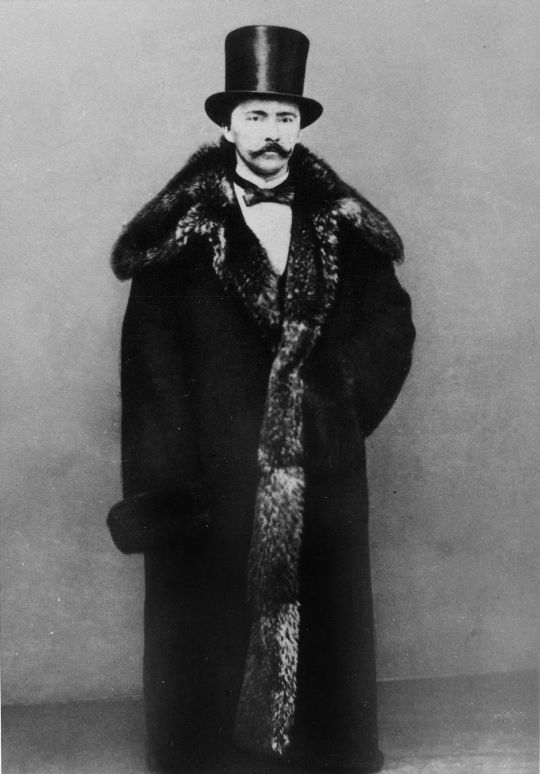
Also, Holloway’s an anti-masker, apparently.

I’m going to step back for just one second and list the one practical, movie budget reason why characters might take their helmets off. The costume designers did an admirable job coming up with something that fits the general requirement of a helmet in major studio releases, prior to The Mandalorian: make the actor’s faces completely visible, because without actors with a strong sense of physical presence and voice acting, you’ll lose connection with the audience.
They did a great job with that. Unfortunately, shiny helmets are a bastard to digitally edit film crew out of.

It’s not impossible to place lights and crew so that the audience won’t notice them. Alien certainly pulled it off. Clear plastic elements in helmets also mean other logistical challenges, though: fogging being the main one. This, and cooking your actors in a fishbowl under studio lights.
Both problems can be simultaneously combated by installing A/C fans within the helmets, but because these helmets are entirely clear, you’re limited to hiding them down near the neck, and anybody who’s done similar for a cosplay or suit will know that it’s potentially noisy and not always effective. You can actually see condensate on the helmets in the movie, though whether that’s from the actor’s breath or a deliberate choice, I don’t know.
All this adds up to increased time resetting actors (i.e. cleaning sweat off of them without disrupting their makeup), more exhaustion from said actors, and the worry that the highest-paid, plot-critical actors may decide they don’t want to do a sequel if the shooting experience is too physically unhealthy.
And then there’s also more time spent carefully arranging crew and lights to hide their reflections, or more time making some poor VFX artist erase a transparent, curved reflection from frame and replace it with something else, or make the actors more comfortable by adding the glass in later with CGI, at the potential loss of some realism. The average modern movie studio would choose one of these VFX-driven options and demand it done in a week, which is why VFX artists need to unionize.
So. I understand at least a few logistical reasons why you don’t tend to make actors wear helmets for too many shooting days. But it has to be balanced with the story. It has to feel believable. It has to fit the story. It has to not make your characters look like mud-witted morons.
As soon as they find liquid water and the oh-so-deadly CO2 levels start to drop, Holloway takes his helmet off.

“Don't be an idiot.”
“Don't be a skeptic.”
Flames on the side of my goddamn face.
Now, this is the moment a lot of people lost sympathy for the human characters, even back in 2012. It was a dumbass idea even then, in the pre-’rona years. Sadly, Millburn the biologist isn’t written smart enough to punch Holloway in the nuts over even thinking of doing this, because we have two problems with what Holloway’s doing here: Biology, and biology.
First, biology.
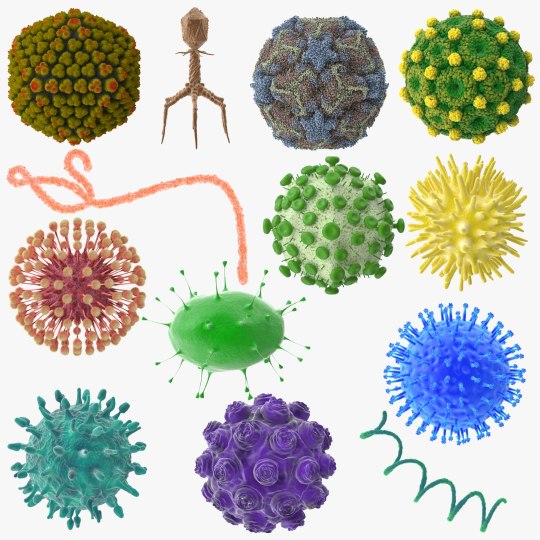
(https://www.turbosquid.com/3d-models/13-viruses-virus-3d-model/1071200)
Obviously, they don’t know if anything’s in the air. He could find out that humans are deathly allergic to alien dust mites. He could have just caught himself a case of space covid, which he and the lemmings that follow him can then transmit to the entire crew if he’s not kept in quarantine. They can sterilize the sealed suits, but they can’t sterilize the inside of his lungs. Yet.
Second, biology.

Specifically, Earth biology. Do you know how carefully modern space agencies sterilize anything that’s headed for Mars, or anywhere else that might have a biosphere of its own? A lot! They sterilize everything a lot! Because microbes are hardy little bastards. We’ve never found extraterrestrial life, only precursor molecules that show the capacity for life to develop in other places. How are you going to verify you’ve found alien life, or even those precursors, if you can’t prove that your samples are uncontaminated? What happens if microbes from Earth manage to survive the trip and establish a foothold somewhere? What if they destroy native life?

This movie’s characters treat this with only a fraction of the gravitas that the cinematography does, which is part of why this remains so jarring throughout. The practical sets, the art direction, and the camerawork are all excellent. The editing continues to do its best, though it almost feels like things were cut very tight through this to speed things along and to give more time, unfortunately, to what the characters are doing.
their crimes against my sanity are not done yet
⛬
(Previous) | (Index) | ⛬
⛬
As a side note, rounding up some discussion from a previous entry: The most excellent artist @noordzee pointed out that the clashing artistic style of the moon and stars slapped onto the carving of Kʼinich Janaab Pakal I. In the previous post, I focused on the link between that carving and its use in ancient aliens conspiracy theories. But let's dig a bit into actual Maya iconography around celestial bodies instead.

Now, I am not an expert on Classical Maya stuff. Not in the slightest. And there is a lot of information on their art that is linguistically inaccessible to me, as a non-Spanish speaker. But out of the Maya art and writing that survived the book-burning conquistadors, we have some iconography for the moon and stars, and they don’t look like what’s in the movie.
I wasn’t able to find any specific pieces of art that contained stars, but I did find the glyph for star, ek’.





I was only able to find depictions of a crescent moon in the context of the moon goddess, where she tends to be sitting on the crescent like a chair, or one part of it is shown behind her, almost like a tail (though I can’t be certain whether that’s due to chipped paint).
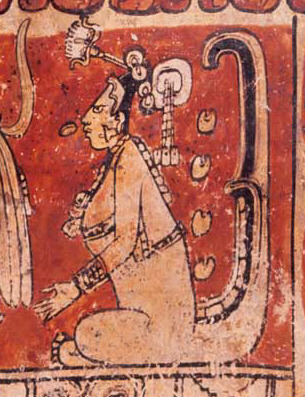
The moon by itself was somewhat harder to find. I couldn’t find any Maya depictions of it with my limited poking around of the spanish internet, but I did find a (much later) Mixtec depiction of the moon, complete with a lunar rabbit! Much like East Asian cultures, the darker markings on the moon are culturally interpreted as a rabbit shape.
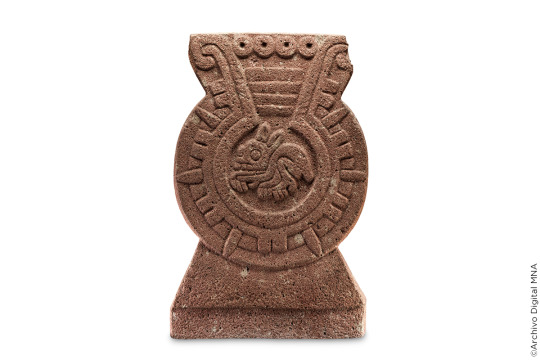
Thanks again to nordzee for pointing out the dissonant art style, because the real mesoamerican art on this subject is phenomenal.
Next time, the movie will hurt me more, so if anybody else has fun facts to share or details to point out. PLEASE. Ease my pain.
⛬
(Previous) | (Index) | (Next)
⛬
Alt text citations:
None this time. Many ramblings, though.
#prometheus 2012#prometheus (2012)#I work in a place where quite a lot of people have to put on clean room suits to go to work#their rooms are behind airlock doors#and that's just to make sure outside germs don't get in#to keep things clean#we don't even have the REALLY scary containment rooms that a few biological laboratories have#I'll ramble more about the logistics of that later#when the movie gets around to breaking laboratory safety standards as well
49 notes
·
View notes
Text
Ach-To and Irish Archaeology
The sequels were my entry into Star Wars and I never would have gone to see The Force Awakens if I wasn't an archaeology nerd.
During the production of Episode VII, a decent number of people with an interest in our archaeological heritage here in Ireland were quite worried about the impact of filming on one of our only two UNESCO World Heritage Sites, the island known as Skellig Michael down off the coast of Kerry.
I went to the film to see if any potential damage was worth it, or if they'd do something unspeakably stupid with it in-universe. I wanted to see if it was respected.
And holy hell I was NOT disappointed. I think I walked out of TFA sniffling to myself about how beautiful the Skellig looked and how it seemed like its use as a location was not just respectful but heavily inspired by its real history.
See, Skellig Michael was a monastic hermitage established at a point when Christianity was so new that the man who ordered its founding sometime in the first century CE was himself ordained by the Apostle Paul. The fellah from the Bible who harassed all and sundry with his letters, THAT Apostle Paul. This is how old a Christian site the Skellig is. It predates St. Patrick by at the very least two hundred years.
The steps we watch Rey climb were originally cut NEARLY TWO THOUSAND YEARS AGO. They have been reworked and repaired many many times since, of course. Still, the path the camera follows Daisy Ridley up is as much an ancient path built by the founders of a faith in real life as it is in the movies.
A hermitage was a place where monks went to live lives of solitude and asceticism so as better to achieve wisdom. The practice is common to many of the major world religions, including the myriad East Asian faiths which inspired the fictional Jedi.
It is said that the hermitage and monastery were originally built with the purpose of housing mystical texts belonging to the Essanes, one of the sects of Second Temple Judaism which influenced some of the doctrines of Christianity. They also, according to what I have read, characterised good and evil as 'light' and 'darkness' and were celibate.
As such, the use of the island in TFA and TLJ does not merely respect Skellig Michael's history, it honours it. It is framed as somewhere ancient and sacred, which it is. It is framed as a place where a mystic goes to live on his own surrounded by nature that is at once punishing and sublime, which of course it was. It shown to be a place established to protect texts written at the establishment of a faith, which it may well have been.
This level of genuine respect for my cultural heritage by Rian Johnson in particular is astonishing. I don't think anyone from outside the US ever really trusts Americans not to treat our built history like it's Disneyland. Much of the incorporation of the Skellig's real past into a fictional galactic history occurs in TLJ, which is why I'm giving Rian so much credit.
It's Luke's death scene which makes the honouring of Irish archaeological history most apparent though.
Johnson takes the archaeological iconography back a further three thousand years for his final tribute to my culture's beautiful historical temples. This time, he incorporates neolithic passage tomb imagery, specifically that of Newgrange, which is up the country from the Skellig.
I think if you understand what the image represents then it makes a deeply emotional scene even more resonant.
The scene I'm referring to is Luke's death.
As he looks to the horizon, to the suns, we view him from the interior of the First Jedi Temple. The sunset aligns with the passageway into the ancient sanctuary, illuminating it as he becomes one with the Force.

As for Newgrange, every year during the Winter Solstice it aligns with the sunrise. The coldest, darkest, wettest, most miserable time of the year on a North Atlantic island where it is often cold, wet, and miserable even in the summer. And the sun comes up even then, and on a cloudless morning a beam of sunlight travels down the corridor and illuminates the chamber inside the mound.
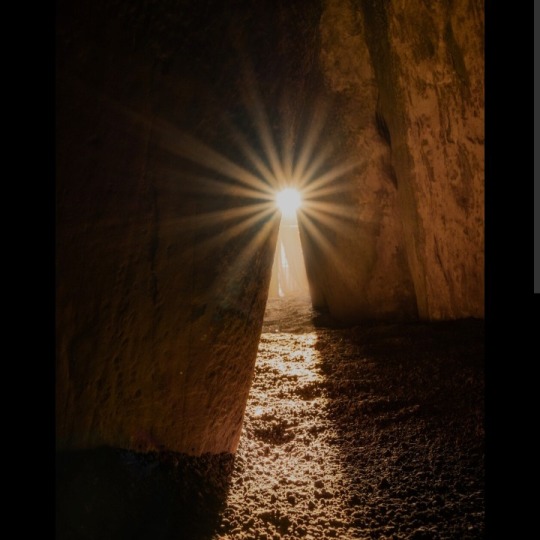
You guys can see this, right? The similarity of the images? The line of light on the floor?
Luke's death scene is beautiful but I think it's a thousand times more moving with this visual context. Luke's sequel arc isn't merely populated by a lore and iconography that honour the place where the end of his story was filmed, I think that incorporation of that history and mythology honours Luke.
We don't know for sure what the Neolithic people believed, religion-wise. We know next to nothing about their rituals. We know that there were ashes laid to rest at Newgrange. There is some speculation that the idea was that the sun coming into the place that kept those ashes brought the spirits of those deceased people over to the other side.
It's also almost impossible not to interpret the sunlight coming into Newgrange as an extraordinary expression of hope. If you know this climate, at this latitude, you know how horrible the winter is. We don't even have the benefit of crispy-snowwy sunlit days. It's grey and it's dark and it's often wet. And every single year the earth tilts back and the days get long again.
The cycle ends and begins again. Death and rebirth. And hope, like the sun, which though unseen will always return. And so we make it through the winter, and through the night.
As it transpired the worries about the impact of the Star Wars Sequels upon Skellig Michael were unfounded. There was no damage caused that visitors wouldn't have also caused. There also wasn't a large uptick in people wanting to visit because of its status as a SW location, in part I think because the sequels just aren't that beloved.
But they're beloved to me, in no small part because of the way they treated a built heritage very dear to my heart. I think they deserve respect for that at the least.
#star wars meta#ach-to#irish history#Irish Archaeology#first jedi temple#skellig michael#newgrange#luke skywalker#the last jedi#early christianity#neolithic#historical parallels in star wars#star wars and history#star wars and mythology#star wars and archaeology
128 notes
·
View notes
Text
Comb made from human skull may have been used in Iron Age rituals
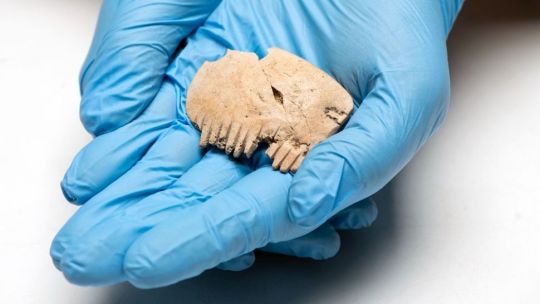
An ancient comb carved from a chunk of human skull has left researchers in London scratching their heads about whether or not it was actually used to style hair thousands of years ago.
Archaeologists first discovered the item at Bar Hill, a village in Cambridgeshire, England, during a three-year dig that ended in 2018. The artifact, which dates to the Iron Age (750 B.C. to A.D. 43) and measures approximately 2 inches (5 centimeters) long, contains nearly a dozen carved teeth and was part of the collection at the Museum of London Archaeology (MOLA).
Dubbed the Bar Hill Comb, the piece is one of 280,000 artifacts from the museum included in an ongoing analysis. Researchers can only theorize the true purpose of the item. There was no evidence showing wear on the comb's teeth, and a hole drilled into the top suggested it may have been worn as an amulet rather than used as a tool to style hair. Read more.
260 notes
·
View notes
Photo
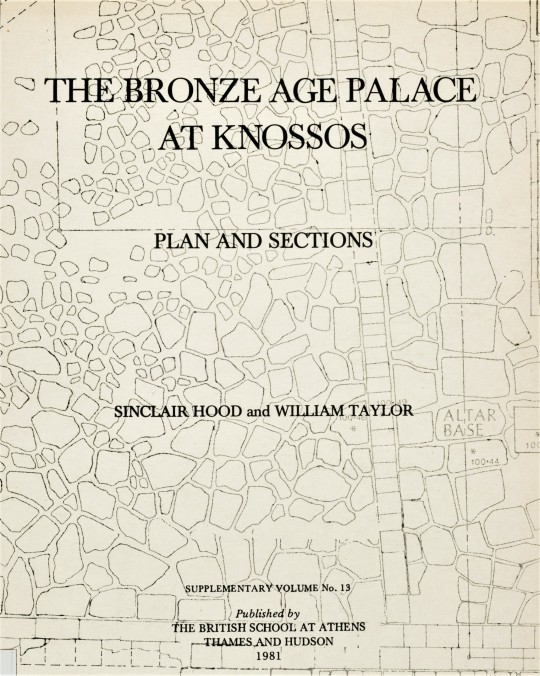
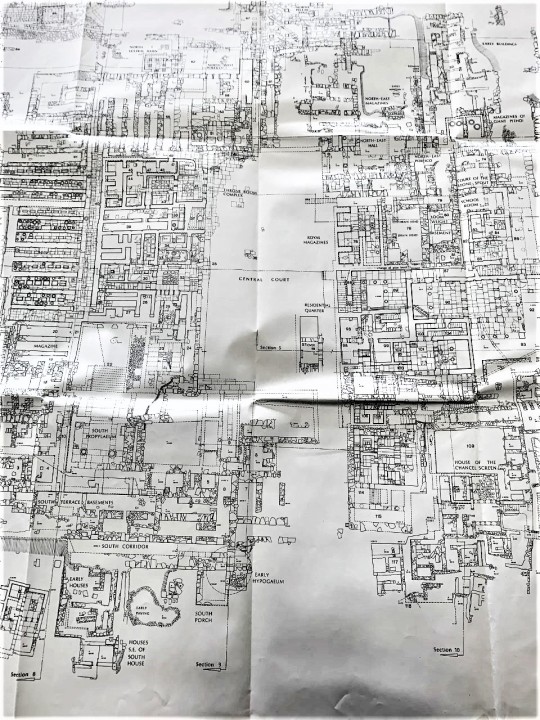
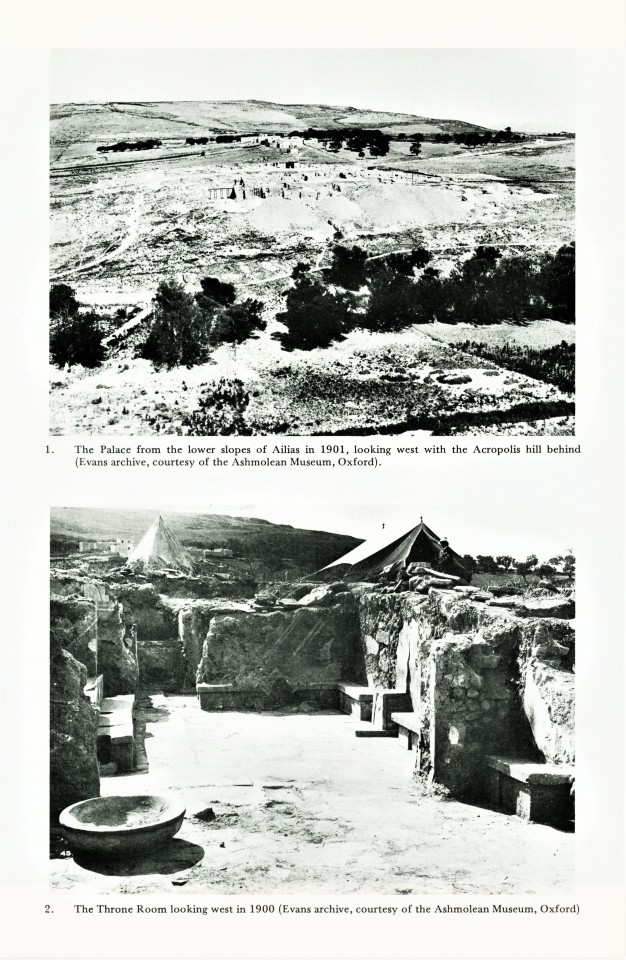

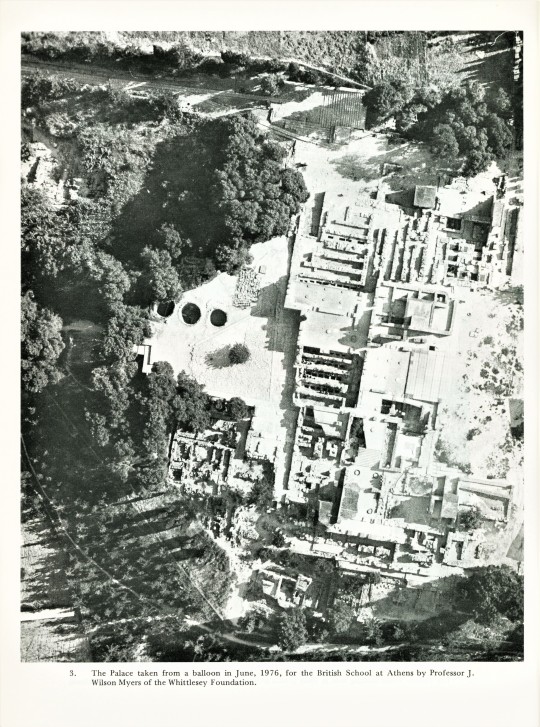
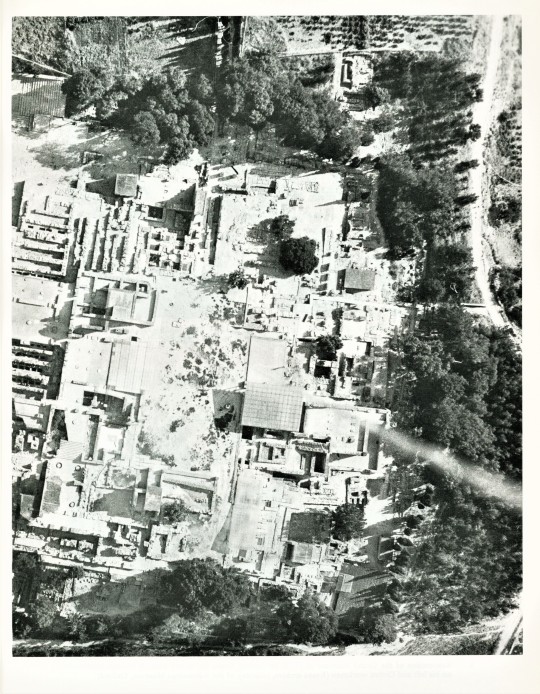


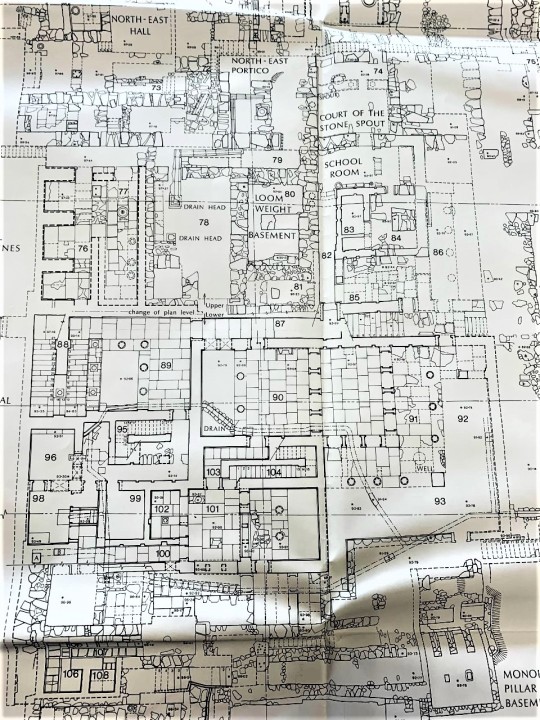
The Minotaur in the Labyrinth
The Minotaur in the Labyrinth stands as one of the ancient stories that has survived the test of time and continuously appears in mainstream entertainment. Most understand that this concept began with the story of Theseus of ancient Athens and how he navigated the labyrinth and slayed the beast within, but many don’t know the inspiration of this idea.
Nearly a millennia before Classical Greece rose to the height of its power (500-350 BCE) the two leading cultures of the Aegean Sea were the Mycenaeans on the mainland and the Minoans on modern day Crete, and it is on this island that we find the labyrinthian structures of Bronze age Greece.
The Bronze Age Palace at Knossos: Plan and Sections by British archaeologist Sinclair Hood and Canadian archaeologist William E, Taylor, Jr., was published as Supplementary Volume No. 13 of The British School at Athens in 1981. It shows the archaeological remains of one of the many Minoan Palaces. Though mostly destroyed and crumbling, we can still see the complex layout of halls and rooms that twist, turn, and abruptly end. Beginning with the excavations of��Sir Arthur Evans in 1900, scores of theories have been raised about the purpose of such confounding architecture, from a form of defense to a means of controlling foreign visits.
Besides the confusing architecture, though no depictions of minotaurs were found, Minoan Palaces such as the one at Knossos did contained several pieces of art that depicted bulls. Upon further inspection, the symbol of the Bull was quite prominent throughout the ancient culture from sports, such as bull leaping, to religious sacrifice.
When looking to those who lived in the past, one should remember that we are not the only ones who inquired about archaeological remains. These ruins would’ve been seen by the Classical Greeks, but by that time their imaginations about the great Palaces and Bull iconography of the Minoan civilization was transformed into the myth of the Minotaur in the Labyrinth.
View more posts on Ancient Greece.
-- LauraJean, Special Collections Undergraduate Classics Intern
#Ancient Greece#Minotaur#labyrinth#Minoans#Knossos#The Bronze Age Palace at Knossos#bronze age#Palace at Knossos#archaeology#Sinclair Hood#William E Taylor Jr.#British School at Athens#greek mythology#Crete#LauraJean
320 notes
·
View notes
Text
archaeology report snippets
So I'm still chewing through Vol II of the Must Farm Site Reports. Vol I was a bit dry but comparatively breezy, like 350 pages of summary. Vol II is the specialist reports, broken out by topic, and it is. Well. Dense. (I'm on page 1189 of Vol II, and have just reached the section on coprolites, LOL.)
But. I printed off a map of the site while reading Vol I, and have been notating things on it as I read. And so I can do things like. Well, I got to the bit about the beads, and noted down the findspot of the one assemblage of beads that very, very likely was a strung necklace (including the large amber bead, the photo of which in the fingers of a finder is the main image on the post I reblogged about the whole thing)-- and was able to put together that this necklace was probably dropped very close to the likely location of an exit door from the structure. Some of the beads were shattered by the heat, but the amber bead was only slightly charred-- and amber burns very well and readily, as I found out when I had my own house fire some years ago. (RIP those earrings I loved)
More random observations under the cut, and I do mean random. I should write up a proper summary sometime, and maybe I will, but I'm still going through the first readthrough. So this is just scattershot Things I Care Deeply About.
Among the textile finds was a lot of flax. Flax seeds, in caches-- some near the food but others not, likely seeds for replanting the next year. Flax stalks, unprocessed. Flax fiber, processed. Flax spun into thread. Linen fabric.
There was also a lot of flax debris all over the floor. They'd rippled, broken, and scutched the flax indoors. Flax seeds and chaff everywhere! But the floors seem to have been covered in grass and reed mats, largely. And there were live sheep in the houses, who left shit scattered around, much of which charred and was preserved. So I suppose a few flax seeds and some chaff wasn't going to add a great deal to the assemblage that wasn't already there.
The flax wasn't retted.
The wheat had been picked by hand, and then the wheat straw had been uprooted to harvest it in as long a length as possible. The straw was woven into mats and some might have been roof thatch.
They ate wheat prepared several ways, and they seem to have stored it still in the hulls, then threshed a few days' supply at once, then roughly ground it, and only finished grinding it more finely into flour right before using it. In a wet environment this made the most sense to keep it from spoiling. They made the wheat into porridge, dough, and also several pots were found with mixtures that included a lot of unpalatable chaff-- possibly they were brewing this mixture, as the chaff would give the necessary breathing room for fermentation to take place.
The textile remnants were all preserved by charring, so there's no information remining about color. No evidence of dyeing exists in the region until a bit later, the Iron Age. But there were roots of yellow iris in the corner of the building where the loom probably was, and one had been neatly cut in half: yellow iris is occasionally used in medicine, but is also a decent yellow dye.
It was the Bronze Age, and there were many bronze tools discovered-- a sort of "set" in each of the households, like everyone had around the same quantity of tools for various purposes. But there were also a bunch of flint tools discovered. Bronze Age worked flints aren't anything on the artistry of those of earlier eras, but the basic functional knowledge was obviously retained, and I feel like the little flint knives were like shitty plastic-handled scissors of today, you'd get one and use it until it broke and toss it and then go whack another flake off the household flint core. There were flint "querns" in three of the houses, similar in shape to the stone querns used to grind grains, but the flint ones would leave dangerous razor-sharp shards if they were used for food, and in other contexts have baffled archaeologists-- why would you make a quern out of a dangerous material? Here's the answer: They were used as sandpaper. If you had a wooden item you wanted to sand smooth, you used the flint block for it. You also, in a pinch, could flake yourself a new cheap little knife off the side of it.
There were a few human bones discovered and all of them were old. Most of them were in the mud under the houses, as if they'd been deposited just before the houses were built. One was a near-complete skull that was worn smooth with handling, and possibly had been worked immediately after its owner (a young probably woman)'s death to make the base flat so it could sit on a shelf or table. One was an arm bone with butchering marks on it, gnawed by dogs at some past point. There was a vertebra, in one of the houses there was somebody's adult canine tooth, and outside the wall of the settlement there was a bit of a femur that had been roughly handled (possibly deposited from the earlier causeway there, which the settlement had been built overtop the ruins of). Only one bone had charring to suggest it had been in the conflagration, it was a bit of a skull and had apparently been somewhere in one of the houses as it burned-- maybe in the roof rafters. So it seems like there was some practice with dedicating a site with human remains? It doesn't read like ancestor worship, which had been my first thought, but those descriptions-- well obviously their ideas of what was suitable or respectful were different than mine but. They read more like offerings, perhaps. Impossible to know! But fascinating. None of the human remains are of the people who lived there, that's fairly certain given the age of the bones and the contexts. (Another bit of analysis: isotopes of the bones suggest their owners had eaten highly terrestrial diets, while we know from coprolites and fish bones that the people in the pile dwellings were eating fish.)
Most of the collapsed buildings lie in such a way that it's clear they were not disturbed after the burning, no attempts were made at salvage, the site was not interfered with. Except for one of the buildings, Structure 3, which was damaged in the 1970s so we don't have much of it-- but of what's there, several of the timbers are disarranged in a way that doesn't make sense for how the building would have collapsed, and one of the beams especially looks as though someone flung it aside sometime after the building collapsed-- possibly much later-- but before the site was buried in sediment. Either a survivor coming back just to look for one important thing, or a much later scavenger poking around? Impossible to say. But it wasn't beavers, and no other animals would bother with timbers like that. And whatever they were looking for, they didn't disturb any of the other ruins-- at least, not of the ones that survived to be excavated. It is important to remember, as we discuss the site, that given the shape of the palisade and the extent of the quarrying nearby, there were probably originally twice as many buildings at least, if not more, and no trace survives of the rest.
While there's no evidence of bronze casting at the site, suggesting all the bronze implements would have been imported from elsewhere (and their somewhat-diverse origins don't contradict this, though many of them are similar/of similar material), the pottery does seem to be local. The assemblage of pots also all have a fairly strong stylistic resemblance to one another, but are not all made with the same level of skill. It seems very likely that within the community were several potters, some more experienced and some novices, and the work was shared among them, but they clearly worked in close proximity and shared stylistic preferences and techniques. One pot in particular is rather lopsided and there's a lump where the clearly-novice maker thinned the wall too much and had to glob more clay on to fix the hole. They broke a lot of pots-- estimates put it at a pot per week across the whole settlement, a pot per month per house-- and it was mostly the cooking pots that got broken. It's possible to estimate how many people were eating in each house by counting how many eating bowls and drinking cups there were.
Piece after piece of evidence tells us this settlement didn't last long-- the wood was green when it burned, and oak seasons in a year or two; there are no signs of nuts or fruit which ripen in late autumn; the wood was all cut at once sometime between March and September given the state of the sap in it, and the pilings were certainly driven when the water was at its lowest in the winter; the articulated lamb skeletons totally free of any evidence of butchery were probably live lambs when the fire started and given their age and the time lambs are born it was late summer or early autumn when they died.
To that I'll add that I know flax ripens in high summer and the debris of processing it was all over the floors.
Piece after piece of evidence suggests these people were farming on dry land, had largely terrestrial diets. But they were also eating fish, we know from the arcs of pike bones scattered outside the footprints of the houses. There's very little residue of fish in their cooking pots, but we also know they were eating it, and eating it undercooked or raw in some instances, because of the parasite eggs in their coprolites. And the absence of roundworm eggs suggests they did not spend much time in terrestrial living settings; many of those sites when explored show evidence of roundworm infestations. I haven't seen this conclusion drawn yet in the literature but that suggests to me that they came to this pile-driven settlement from another one, if they only spent at most a year here. But that's just my concusion.
I keep not looking at the index of Vol II so I keep thinking I'm at the end and then there's another chapter. The joys of reading a PDF rather than a paper book, LOL. Oh I'm almost at the end! OK let me read this last chapter then. Oh it's a report on the mechanics of the conflagration. Okay. This is the central mystery! Well they say up front they can't possibly tell what caused it.
Other pile-driven lake-dwelling settings from similar eras are known to have been burned down, possibly deliberately, and then rebuilt over the top of the ruins, probably because the buildings would be so difficult to maintain and it would be easier to reuse the prime settlement spot without the debris of old, failing buildings. This was very, very clearly not that.
"The presence of so many items of apparent value and use within the conflagration debris, and the deep, localized char patterns on timbers left to smoulder for many hours undisturbed, when a person present could have easily separated them to extinguish the last burning elements and to save useful timbers from destruction, suggest the inhabitants were either unwilling or unable to respond to the fire, or else unaware of the destruction." (p. 1264)
They think it started in the southeast-middle of Structure 1, and collapsed the roof of it rather quickly but not before spreading to the others. But there are no signs of any attempts to put it out. The smoke would have been visible for miles, even if by some weird chance everyone in the settlement was out doing something like tending the dryland fields their crops were obviously in (there's no way this would be true for a routine reason, you just can't leave premodern houses untended like that, somebody is home to tend the fire and start dinner, that's just got to be how it works, but even if everyone had gone out they would see the smoke and come back!); it's not like there wasn't water all around to use to put out a fire. It starting in one place not many, with no sign of accelerants or fuel caches placed around to speed it, is a sign that it wasn't intentionally set, but it's just plain bizarre that nobody tried to put it out, or tried to salvage anything from the houses, or even just set loose the live animals that were in the houses who surely would have fled (they weren't tiny lambs, they were a few months old, well old enough to run).
Something happened, but we just can't know what. The fire burned unattended, un-interfered-with: nobody was inside. We simply can't know why.
25 notes
·
View notes
Text
Anyway heres my favourite portrait of Johann Winckelmann, a german scholar from the 18th century widely regarded to be the father of modern archaeology and art history

Not only is the robe and hairwrap absolutely fabulous, they also lend him a quite effeminate air. This was absolutely done on purpose by the artist, something that becomes obvious when you realise he is depicted studying a picture of Antinous

my favourite part?
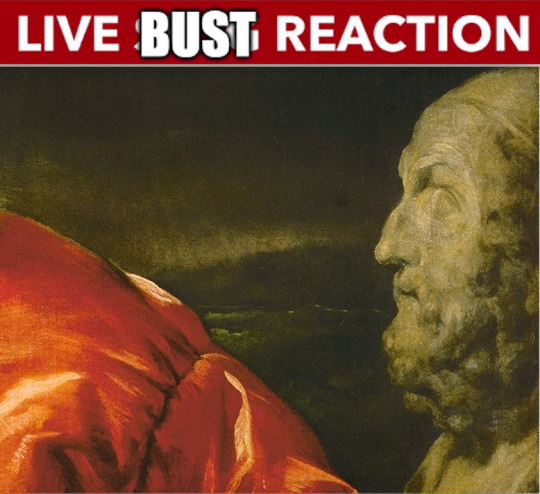
33 notes
·
View notes
Text

i’m sorry but this is the FUNNIEST THING i’ve ever read… a bunch of academics peering at this wooden dildo and having Intense Discussions about it
GUARDIAN - Archaeologists believe they may have found the only known lifesize Roman dildo, discovered in a ditch in what were the farthest northern fringes of the empire.
If it was not used as a sexual implement then the 2,000-year-old object may have been an erect penis-shaped pestle, or it could have been a feature from a statue that people touched for good luck.
What it definitely is not is what it was catalogued as after its discovery at the Roman fort of Vindolanda in Northumberland in 1992: a darning tool.
“I have to confess,” said Newcastle University archaeology senior lecturer Rob Collins, “part of me thinks it’s kind of self-evident that it is a penis. I don’t know who entered it into the catalogue. Maybe it was somebody uncomfortable with it or didn’t think the Romans would do such silly things.”
If they did think that, they could not be more wrong given that two- and three-dimensional representations of phalli were ubiquitous in the Roman world, whether in mosaics, frescoes, pot decoration or pendants worn around the neck.
The Vindolanda phallus is 16cm long but, researchers say, was probably larger because archaeological wood is prone to shrinkage and warping.

It has been examined by researchers at Newcastle University and University College Dublin. The analysis has revealed it to be, at the very least, the first known example of a disembodied phallus made of wood recovered anywhere in the Roman world.
The phallus was found in a ditch along with dozens of shoes and dress accessories as well as craft waste products such as leather off-cuts and worked antler – perhaps one reason for it being seen as a darning tool.
“What makes this a first is that it is not a small, miniature phallus,” said Collins. “It’s lifesize. It’s also important because wood just doesn’t normally survive … we couldn’t find any parallels.”
The size and uncertainty of function was fascinating, he said. “Often in archaeology when we find an object we can tell what it was used for or deduce what it was used for. That wasn’t the case for this object. We have had to cast our nets wide in thinking what would a six-and-a-half-inch wooden carving of a phallus be used for.
“We had some very interesting discussions.”
Ancient phallic objects were often used for warding off evil. The analysis showed the Vindolanda phallus had notably smoother ends, indicating it was used for something over a period of time.
The team has alighted on three possible theories, all of which are outlined in a detailed discussion paper published in the journal Antiquity.
One theory is that it was used for sexual reasons. That could mean it was a sex toy although some caution is needed, said Collins.
“Sometimes they [dildos] weren’t always used for pleasure … they can be implements of torture so I’m very conscious of using the term sex toy. Hopefully that is what it was used for. That is the most exciting and intriguing possibility.
“If that is the case it would be, to our knowledge, the first Roman dildo that’s been encountered from archaeology. We know from Greek and Roman poetry and Greek and Roman art that they used dildos. But we haven’t had any archaeological examples found which is intriguing in itself.
“If it is that and it is found up here on the northern fringe of the empire and not down in the rich heartland of Roman Italy … it is kind of astounding.”
Theory two is that the object was used as a pestle, either for culinary purposes or to grind cosmetic or medicinal ingredients. Its size would have made it easy to use and the shape would have imbued the food or ingredients with perceived magical properties.
The third option is that it was meant to slot into a statue which passersby would touch for good luck or to absorb or activate protection from misfortune – which was common throughout the Roman empire.
If that was the case, the statue would probably have been located near the entrance to an important building but the evidence indicates that the phallus was either indoors or at least not in an exposed position outside for any length of time.
Researchers hope the Vindolanda phallus will prompt a search for similar objects in other collections. In the meantime it has gone on display at the Vindolanda museum.
255 notes
·
View notes
Text
AU Sonic Smackdown - Round 1, Right Side
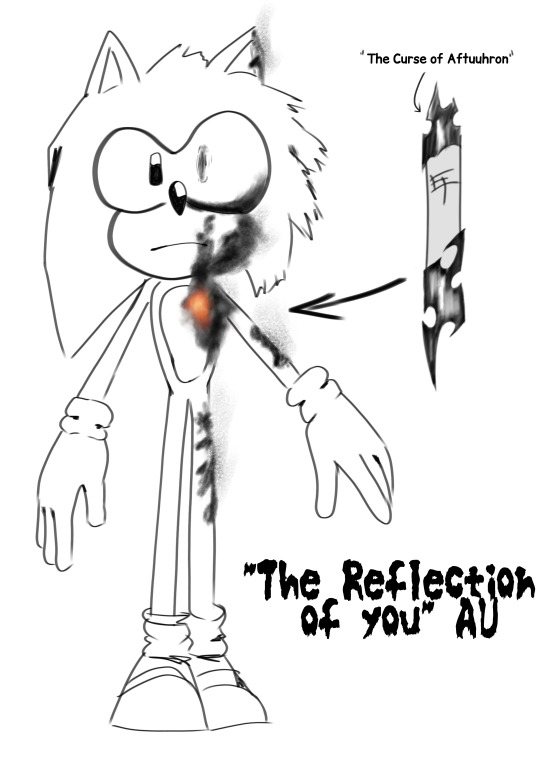

Click to see full size image
Reflection of You AU belongs to @jeysecretive
Mecha Troubles AU belongs to @wolfinitethewolf
Read more about them under the cut!
Reflection of You AU-
While doing an archaeological dig, Sonic found an old artifact that gave him a curse.
It was very strong, tormenting the hedgehog day by day, and no one knew how to help him.
…By coincidence, Sonic was taken to Mephiles, who lived on the edge of an unknown interdimensional wasteland. Demon said that the only way to break the curse was to kill everyone Sonic cared about. Guy was against it.
But still, pain tormented him and tore him apart from the inside out. Nothing worked for the hedgehog, so he made the decision to kill Eggman. And so he did.
But the act did not free the hedgehog from the Curse, which was making him worse and worse, making him beastly with pain.
The hedgehog decided to make a second visit to Mephiles.
But when he's arrived at the demon's domain, the demon was hosting an unusual guest. Sonic remembered the treacherous things that Mephiles did, and decided to overhear his conversation.
The demon was talking to a powerful dark demigod who had been Mephiles' buddy for years.
It turned out that Mephiles had purposely enchanted the artifact so that Sonic would obey him, getting into the taste and becoming a bloodthirsty monster.
As soon as the hedgehog heard this, he destroyed the demon on the spot in a rage.
But the Curse went nowhere. And Sonic was desperate!
It was a good thing he had met Shadow.
The black hedgehog began traveling the world with him to find a way to crack Sonic's curse, and soon they learned that the Seven Emeralds of Chaos and the Master Emerald would help him heal. But it's worth the rush! Sonic's time is running out, and the emeralds are hidden all over the planet.
The end of the story is still open, and the hedgehogs are searching for their emeralds. Hopefully, they will make it.
Mecha Troubles AU-
AU where in Scrapnik Island Mecha Sonic had successfully swapped minds with Sonic.
Mecha Sonic is able to do everything Sonic could (spindash, harness the Chaos Emeralds powers, etc). However, being a robot, is really great with tech, able to hack into anything, or reprogram anything. He is also able to send signals to things (since he IS still technically a robot).
He is not cocky or snarky like Sonic was, he usually never speaks unless he really needs too. He will plan ahead of things, being a thinker and not leaping into things first.
Unlike Sonic, who fights as if its a game and will go easy on them, Mecha does not, fighting fast, swiftly, and without stopping for anything else, viciously attacking if needed. Before making physical contact with anyone in a fight, he will instead use his speed to his advantage to sneak up upon an enemy, bouncing back and forth until successful. Usually shows no emotions.
His main goal is to end Dr. Eggman, and will eliminate anyone that gets in his way.
#sonic the hedgehog#sonic#sonic au#sonic alternate universe#au sonic smackdown#round 1#reflection of you au#mecha troubles au
29 notes
·
View notes